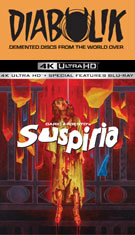

Color, 1977, 98 mins. 47 secs.
Directed by Dario Argento
Starring Jessica Harper, Joan Bennett, Stefania Cassini, Alida Valli, Flavio Bucci, Udo Kier, Miguel Bosè
Synapse Films (UHD, Blu-ray & DVD) (US RA/R1 HD/NTSC), Cult Films (Blu-ray & DVD) (UK RB/R2 HD/PAL), Eagle Pictures (UHD, Blu-ray & DVD) (Italy R0/RB/R2 HD/PAL), 84 Entertainment (Blu-ray & DVD) (Germany RB/R2 HD/PAL), Anchor Bay, Blue Underground (US R1 NTSC) WS (2.35:1) (16:9), Nouveaux (Blu-ray & DVD) (UK RB/R2 HD/PAL), Wild Eye (Blu-ray & DVD) (France RB/R2 HD/PAL), Umbrella (Blu-ray & DVD) (Australia R0 HD/PAL) / WS (2.35:1) (16:9)
Whether  you see it as a glorious celebration
you see it as a glorious celebration 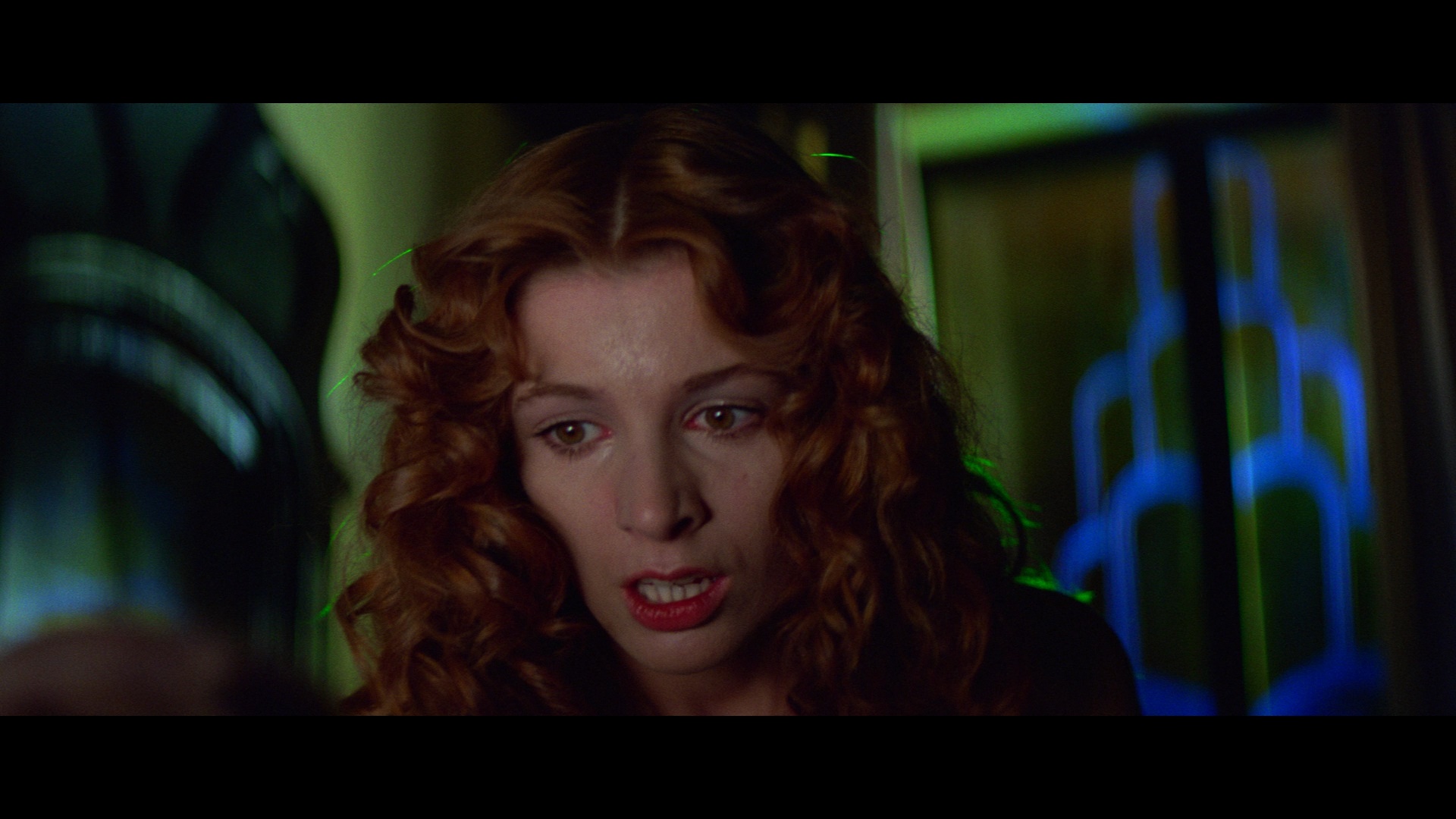 of cinematic style or a simple exercise in flashy visuals at the expense of content, Suspiria is a difficult experience to forget. Apart from its secured status as one of the most visually ravishing horror films, Suspiria stops at nothing to keep the audience in its grip and marks a radical departure from the rigorous narrative manipulation of Deep Red. Here the story offers few genuine surprises; instead, the pleasure lies in the bizarre little side roads it takes along the way, offering up a seemingly boundless array of nasty delights at 24 frames per second. Here the random, illogical plotting and mannered acting which would normally cripple a film instead become assets, creating the disorienting air of a nightmare which must simply be accepted in order to enjoy the ride.
of cinematic style or a simple exercise in flashy visuals at the expense of content, Suspiria is a difficult experience to forget. Apart from its secured status as one of the most visually ravishing horror films, Suspiria stops at nothing to keep the audience in its grip and marks a radical departure from the rigorous narrative manipulation of Deep Red. Here the story offers few genuine surprises; instead, the pleasure lies in the bizarre little side roads it takes along the way, offering up a seemingly boundless array of nasty delights at 24 frames per second. Here the random, illogical plotting and mannered acting which would normally cripple a film instead become assets, creating the disorienting air of a nightmare which must simply be accepted in order to enjoy the ride.
As the opening narration helpfully informs us, American ballet student Suzy Bannion (Harper) arrives in Freiburg, Germany to continue her studies at the celebrated Tanz Academy. Unfortunately she emerges from the airport several hours late during a violent thunderstorm and is turned away at the school door. Meanwhile another student rushes past her into the darkness and meets a sinister fate, the first sign of many indicating that this seemingly classical school of dance may not be all that it appears. Led by a mysteriously absent directress, the haughty Madame Blanc (Dark Shadows' Bennett), and the perpetually grinning Miss Tanner (Valli), the academy proves to be a challenging experience for Suzy right from the beginning. She's forced to room on 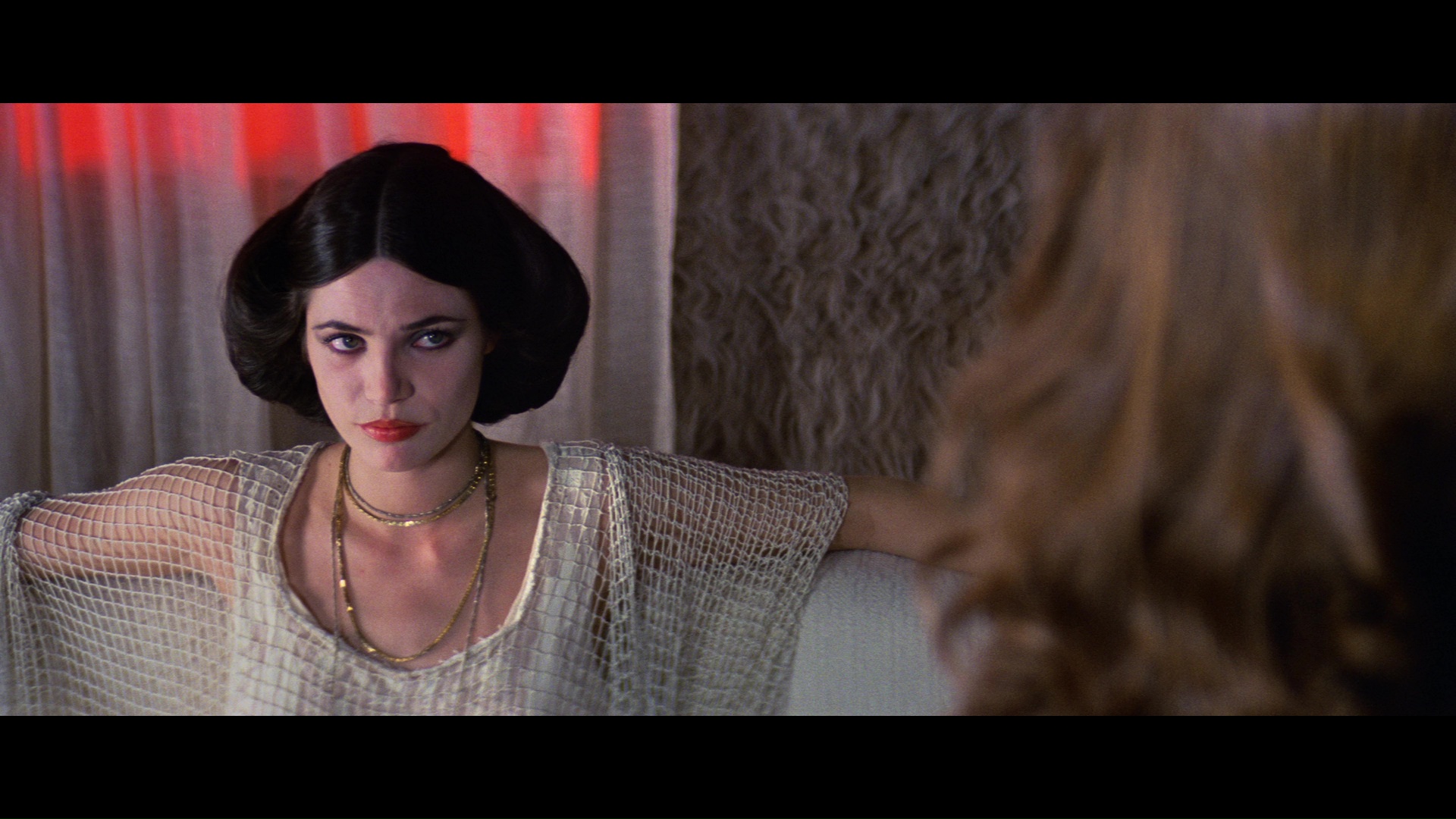 the grounds after suffering an embarrassing collapse during class, her entire floor must vacate to the gym for a sleepover after a particularly nasty maggot infestation, and anyone who
the grounds after suffering an embarrassing collapse during class, her entire floor must vacate to the gym for a sleepover after a particularly nasty maggot infestation, and anyone who 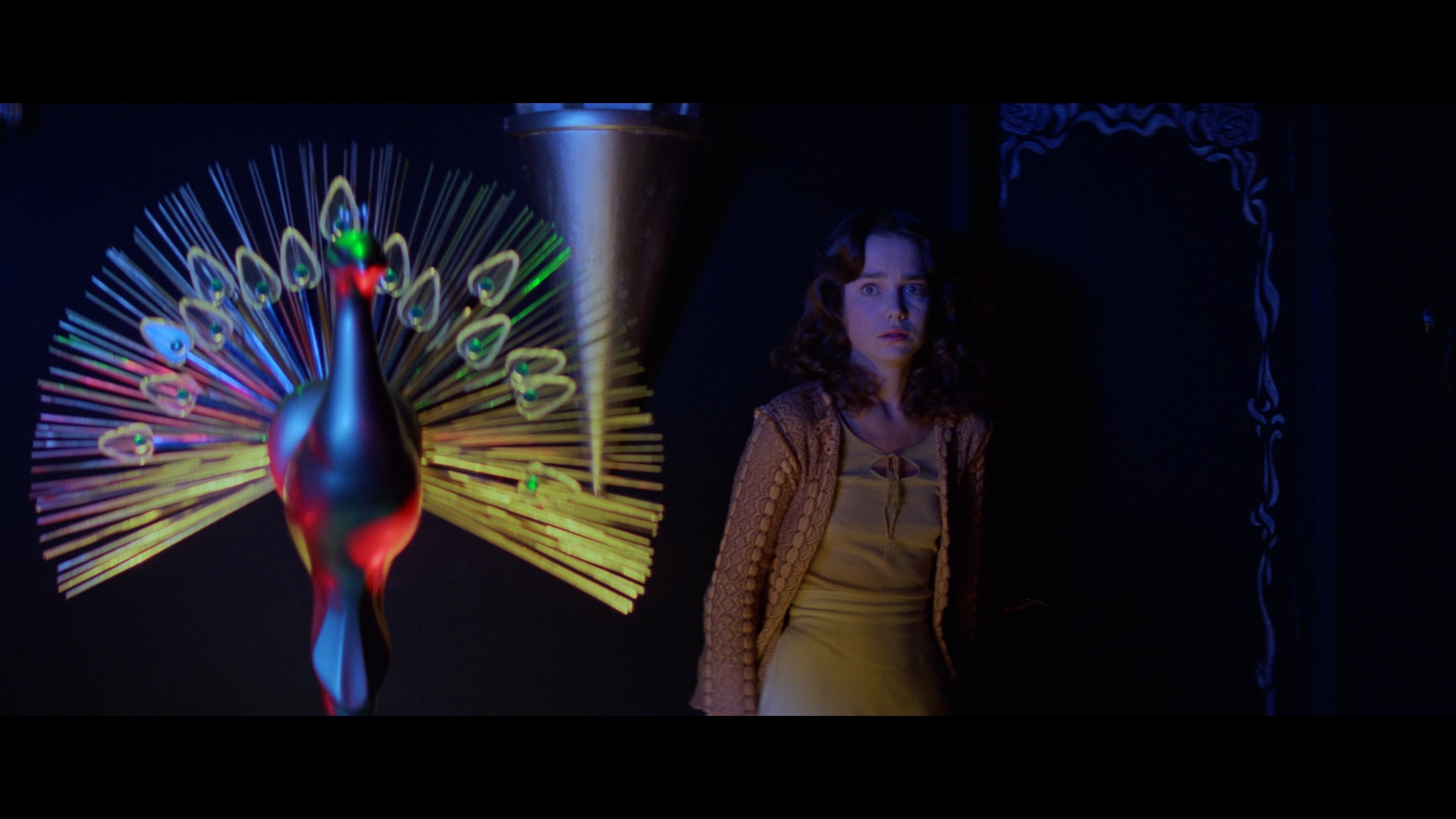 crosses the powers that be seems to meet wind up missing or dead. Along with her only friend, Sara (Casini), Suzy pieces together the puzzle that leads t o a dramatic supernatural finale.
crosses the powers that be seems to meet wind up missing or dead. Along with her only friend, Sara (Casini), Suzy pieces together the puzzle that leads t o a dramatic supernatural finale.
Anchored by Harper's wonderfully sensitive lead performance, Suspiria is Argento's most female-oriented film. The five minor male characters in the film only have one or two scenes each and serve as nothing more than plot functions, while both sides of the moral coin here are controlled by either innocent or corrupt women. Though the students don't seem to be fully aware of the school's true occult nature, the evil influence nevertheless manifests itself even in the early scenes which become more significant later on. For example, Harper's discovery that witches thrive on the gaining of personal wealth adds a sinister tone to the early comic relief scenes in which the girlish students snip about bilking money from their classmates, and that red wine Harper sips throughout the film doesn't look so harmless at all when she finally pours it into the sink. The intensity of its violence - most notably the vicious, unforgettable opening act - is filmed with the same visual care as the rest of the film. Never gratuitous, the killings instead function as a kind of brutal, ritualized occult practice carried over into modern times. The German setting and subtle allusions to its culture scarred by ritualized violence (note the sculpted soldiers in the Munich square and the use of razor wire, for starters) add to the air of refined, decadent unease, creating a setting in which every well-appointed door and curtain leads to something dark and unspeakable behind it.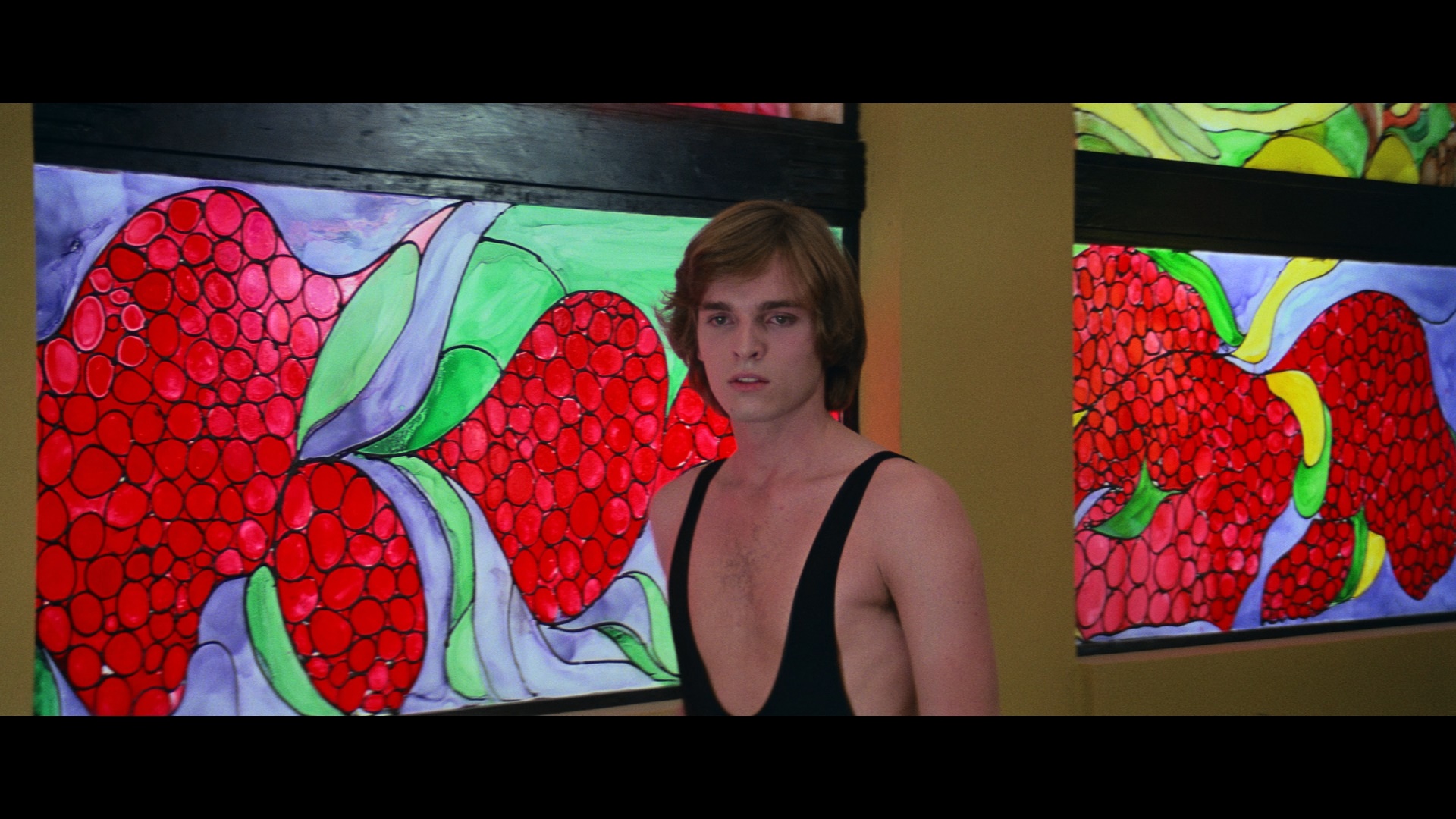
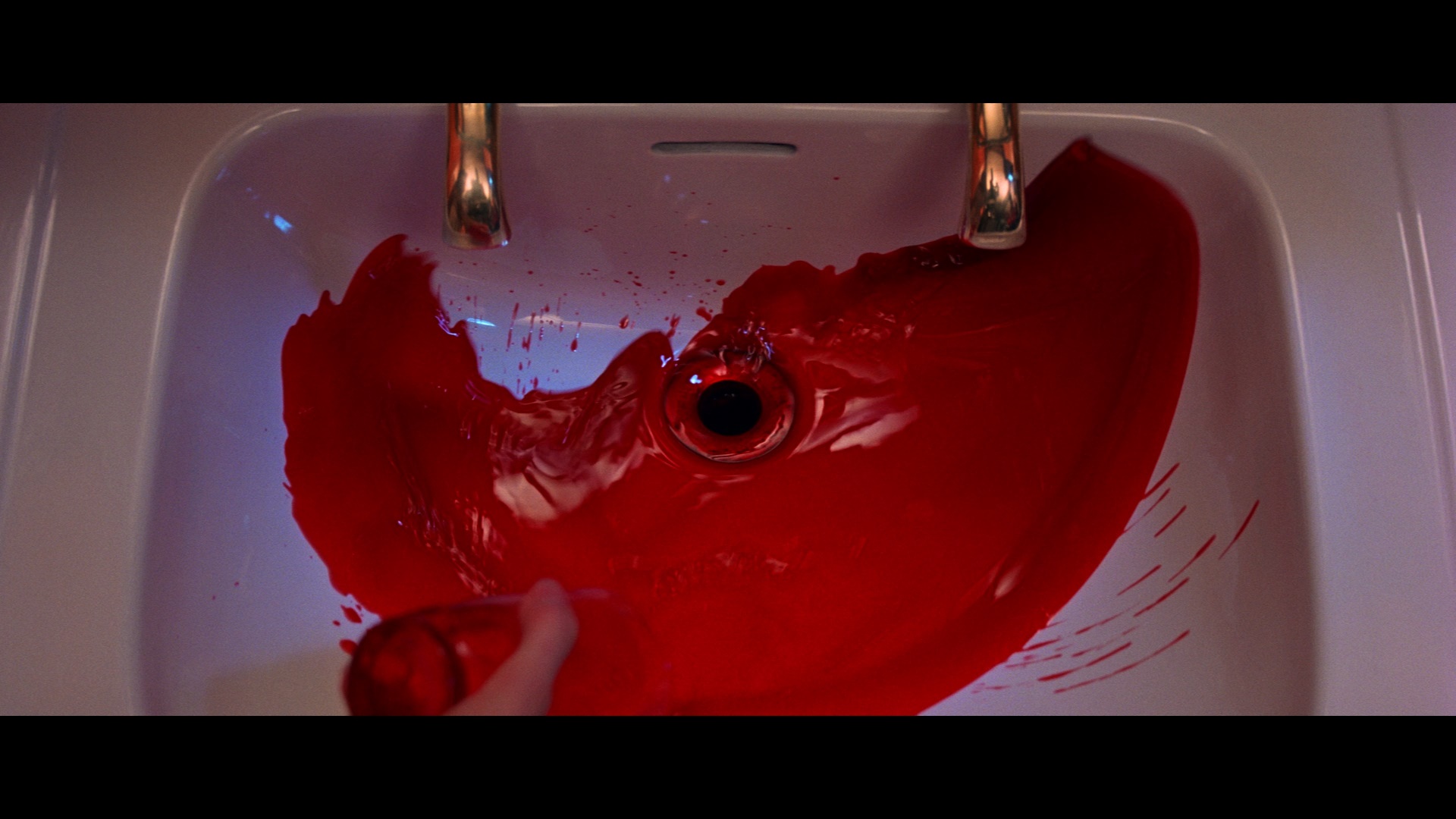
One of Argento's rare U.S. commercial successes, Suspiria was released by 20th Century-Fox (under the International Classics banner) in an R-rated edition which toned down some of its more baroque bloodletting (and completely omitted a key scene involving Daniel and his seeing-eye dog). Fortunately audiences never forget the experience, and for years the film became something of a holy grail for those who couldn't get their hands on the scarce Japanese pan and scan laserdisc or the halfway letterboxed Venezuelan VHS tapes. Relief finally arrived when Magnum Entertainment released a widescreen, uncensored VHS edition which later made it to laserdisc courtesy of Image Entertainment, with the U.S. and European trailers tacked on for good measure. Supervised by Bill Lustig, the transfer was very good for its time despite the deliberate desaturation of some colors to avoid video noise; even better, the stereo soundtrack was enough to inspire leagues of Euro horror fanatics to dump more money into their home video sound systems. The same transfer was later rehashed for a British DVD, about which the less said the better, and Fox Lorber's briefly released VHS edition was even more unsatisfying thanks to (blasphemy!) its mono soundtrack.
Anchor Bay announced its plans to release Suspiria on DVD a year in advance of its 2001 street date, with public details released about the efforts made to create the finest version possible from the original negative. The visual results certainly did meet expectations, as the splashy colors on display here outranked 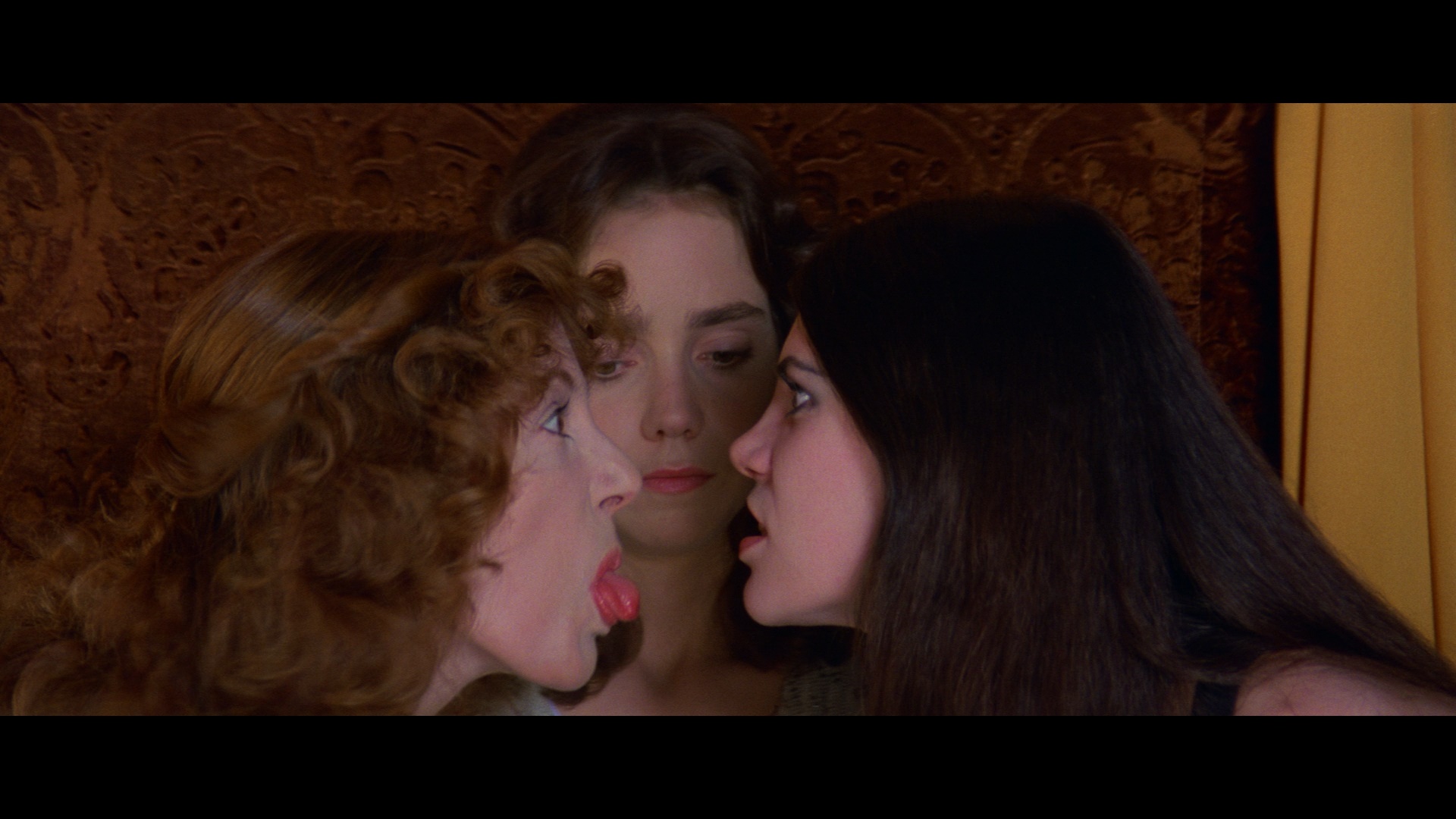 even those on the already heavily saturated Japanese laserdisc. The snoring directress
even those on the already heavily saturated Japanese laserdisc. The snoring directress 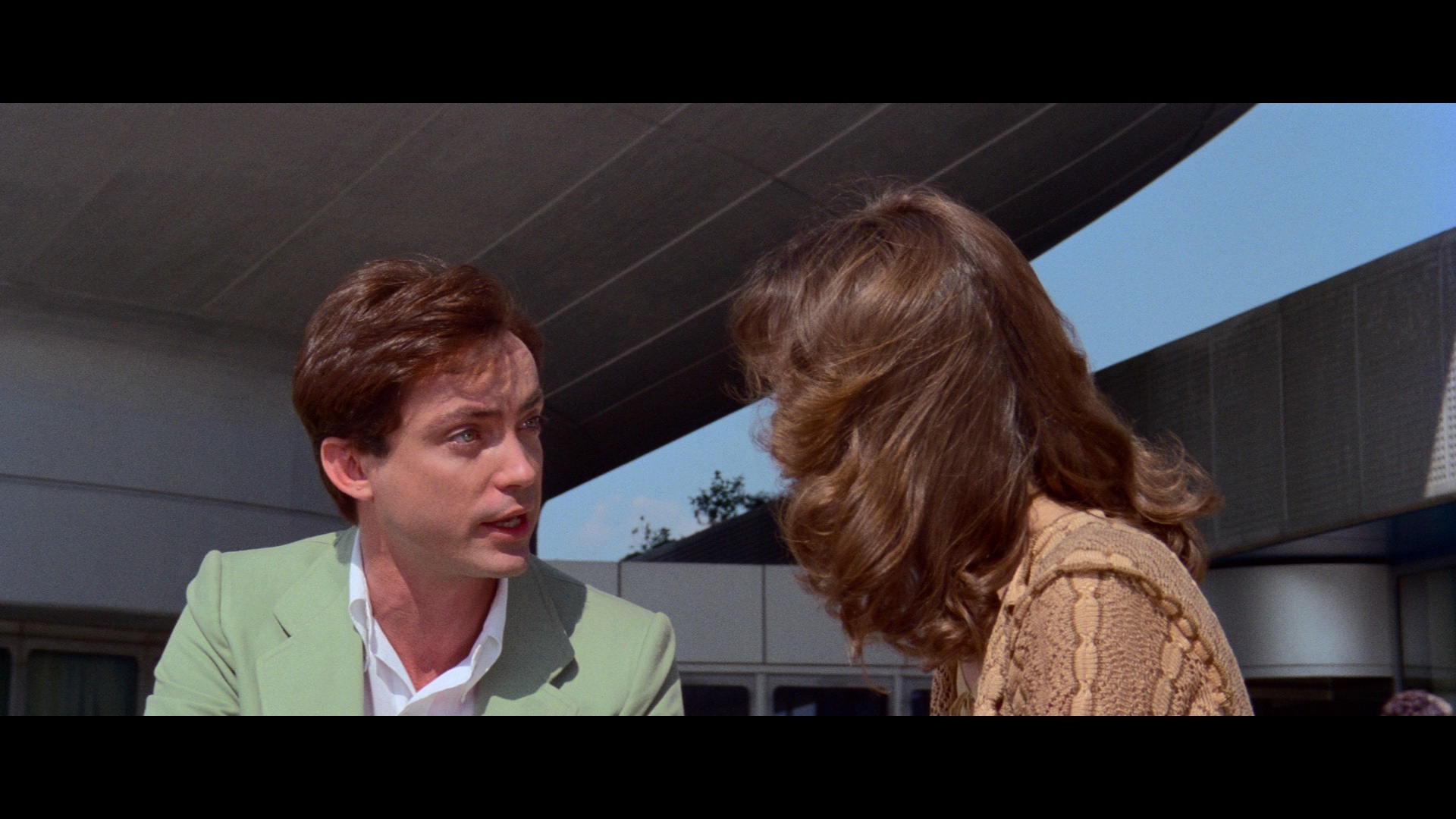 scene in which Harper and Casini are bathed in solid red lighting benefited especially from the added resolution, as Harper's nicely modulated facial reactions can now be appreciated without any ruinous smearing or smudging. The horizontally squished appearance of the earlier widescreen version was also corrected. Superficially the soundtrack appears to be a dynamic, thunderous presentation of the film, with the spectacular Goblin score beautifully separated between each channel and dialogue still creatively spread out between the front and center channels. However, it's worth noting that this is not a tweaked Dolby Digital/DTS presentation of the familiar stereo version we've all grown to know and love. On this DVD, many of the sound effects are completely different, and several odd vagaries pop up compared to earlier English language versions. Among the most notable differences (with some spoilers, so beware): Pat's shouted statement at the front door during the rainstorm is now partially silent, making it impossible to make out her words even when one knows what she is saying; after Pat says "I'd like to dry off" at the beginning, the door slam behind her is now a soft thud instead of the earlier split-channel slam; the eyes glaring at Pat through the window are accompanied by a shorter, more muted sound effect stinger; the cries of "Help me" during the first murder have been reduced and are much softer; the growling heard inside the school hallway when Albert is attacked by the seeing eye dog is different and much more subdued; the whispering voices emanating during the beginning of Sarah's nocturnal pursuit through the building are not the same, and the sounds heard during the close up of the razor being removed are edited differently. On the other hand, when Suzy observes Madame Blanc and company undergo their witch ritual, Miss Tanner has a previously obscured line of dialogue when she leans forward: "She wouldn't eat or drink anything this evening." The thunder effects which occur in the same scene to coincide with the red flashes of light (as Blanc utters "Sickness! Sickness!") are now missing, too.
scene in which Harper and Casini are bathed in solid red lighting benefited especially from the added resolution, as Harper's nicely modulated facial reactions can now be appreciated without any ruinous smearing or smudging. The horizontally squished appearance of the earlier widescreen version was also corrected. Superficially the soundtrack appears to be a dynamic, thunderous presentation of the film, with the spectacular Goblin score beautifully separated between each channel and dialogue still creatively spread out between the front and center channels. However, it's worth noting that this is not a tweaked Dolby Digital/DTS presentation of the familiar stereo version we've all grown to know and love. On this DVD, many of the sound effects are completely different, and several odd vagaries pop up compared to earlier English language versions. Among the most notable differences (with some spoilers, so beware): Pat's shouted statement at the front door during the rainstorm is now partially silent, making it impossible to make out her words even when one knows what she is saying; after Pat says "I'd like to dry off" at the beginning, the door slam behind her is now a soft thud instead of the earlier split-channel slam; the eyes glaring at Pat through the window are accompanied by a shorter, more muted sound effect stinger; the cries of "Help me" during the first murder have been reduced and are much softer; the growling heard inside the school hallway when Albert is attacked by the seeing eye dog is different and much more subdued; the whispering voices emanating during the beginning of Sarah's nocturnal pursuit through the building are not the same, and the sounds heard during the close up of the razor being removed are edited differently. On the other hand, when Suzy observes Madame Blanc and company undergo their witch ritual, Miss Tanner has a previously obscured line of dialogue when she leans forward: "She wouldn't eat or drink anything this evening." The thunder effects which occur in the same scene to coincide with the red flashes of light (as Blanc utters "Sickness! Sickness!") are now missing, too. 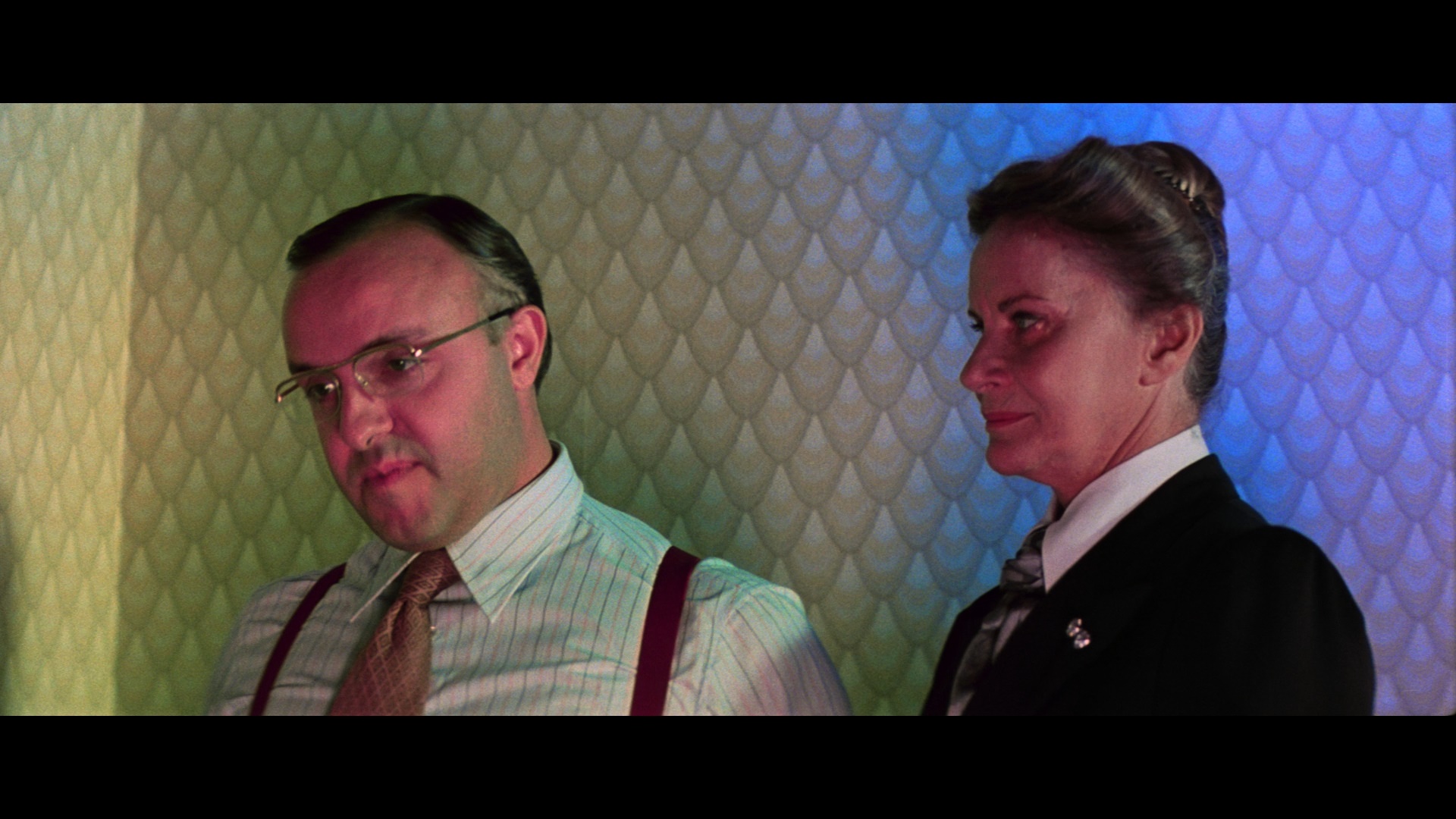 Also oddly enough, the screaming voices heard over the end credits music are gone, leaving instead Goblin's frenzied middle movement of the main title theme. This release also marks
Also oddly enough, the screaming voices heard over the end credits music are gone, leaving instead Goblin's frenzied middle movement of the main title theme. This release also marks 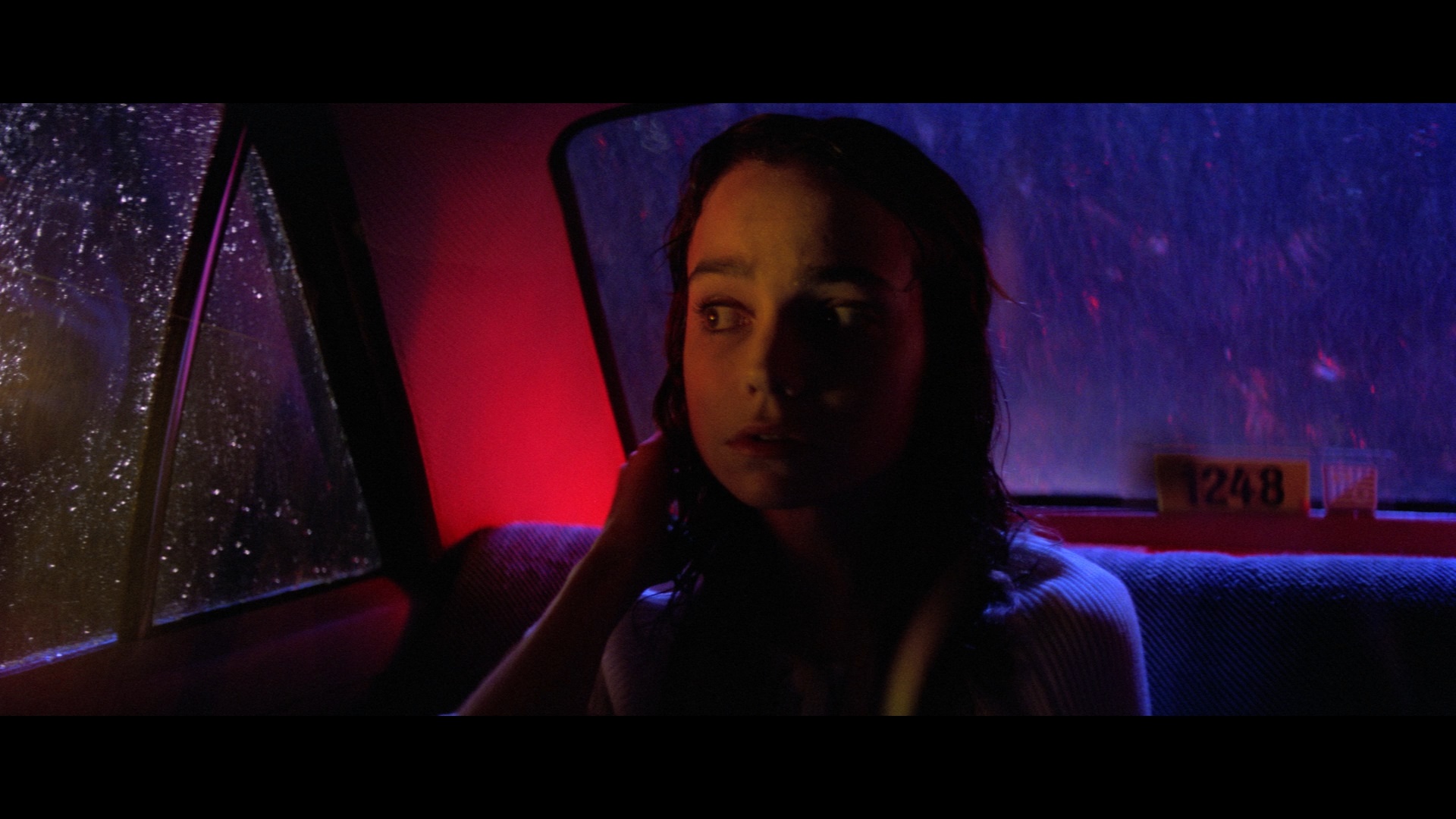 the first availability of Suspiria with captions, and while this addition helps clarify a few lines of dialogue, it also contains quite a few errors and makes for hilarious reading when the captioner tries (and fails) to translate the Goblin music ("La la la la la la la -- Wait!"). The Italian audio is included but, since it can only be viewed with those captions, is pretty useless here.
the first availability of Suspiria with captions, and while this addition helps clarify a few lines of dialogue, it also contains quite a few errors and makes for hilarious reading when the captioner tries (and fails) to translate the Goblin music ("La la la la la la la -- Wait!"). The Italian audio is included but, since it can only be viewed with those captions, is pretty useless here.
Available in both a single disc and three-disc special edition, Suspiria's primary DVD sports the movie with the two aforementioned theatrical trailers, a brief TV spot (condensed from the U.S. trailer), radio spots, a gallery of international stills and poster art, talent bios, a very odd Daemonia music video (directed by Simonetti) for the main theme, and a funny Easter Egg involving Udo Kier. The second disc contains a spectacular 51m52s documentary, Suspiria 25th Anniversary, in which the main surviving participants offer their thoughts on the film's production and influence. Argento, Nicolodi, the members of Goblin, and cinematographer Luciano Tovoli offer elaborated versions of the familiar stories about the film's lensing on discontinued Technicolor stock, Nicolodi's inspiration from a relative's occult school experience, and the unorthodox process of the music composition. Argento offers a few nice new tidbits of information, such as his explanation behind the placement of all the school's doorknobs. Harper, Casini, and Kier all make very welcome appearances to offer an actor's perspective, and all of them seem to recall the production with great affection and seem even prouder of the film now. Harper and Casini's recollections of Bennett are a particular highlight, and Casini scores the biggest laughs with her vivacious impersonations of everyone involved on the set. Finally, Tovoli's anecdote about Single White Female is nearly worth the price of admission by itself.
Disc three offers the Suspiria soundtrack but isn't quite a direct carryover of the official Cinevox CD release. It contains the full album tracks and some of the bonus cues from the earlier expanded CD edition, along with the new Daemonia contributions to round out the CD on a more modern, rock-style note. Those who already 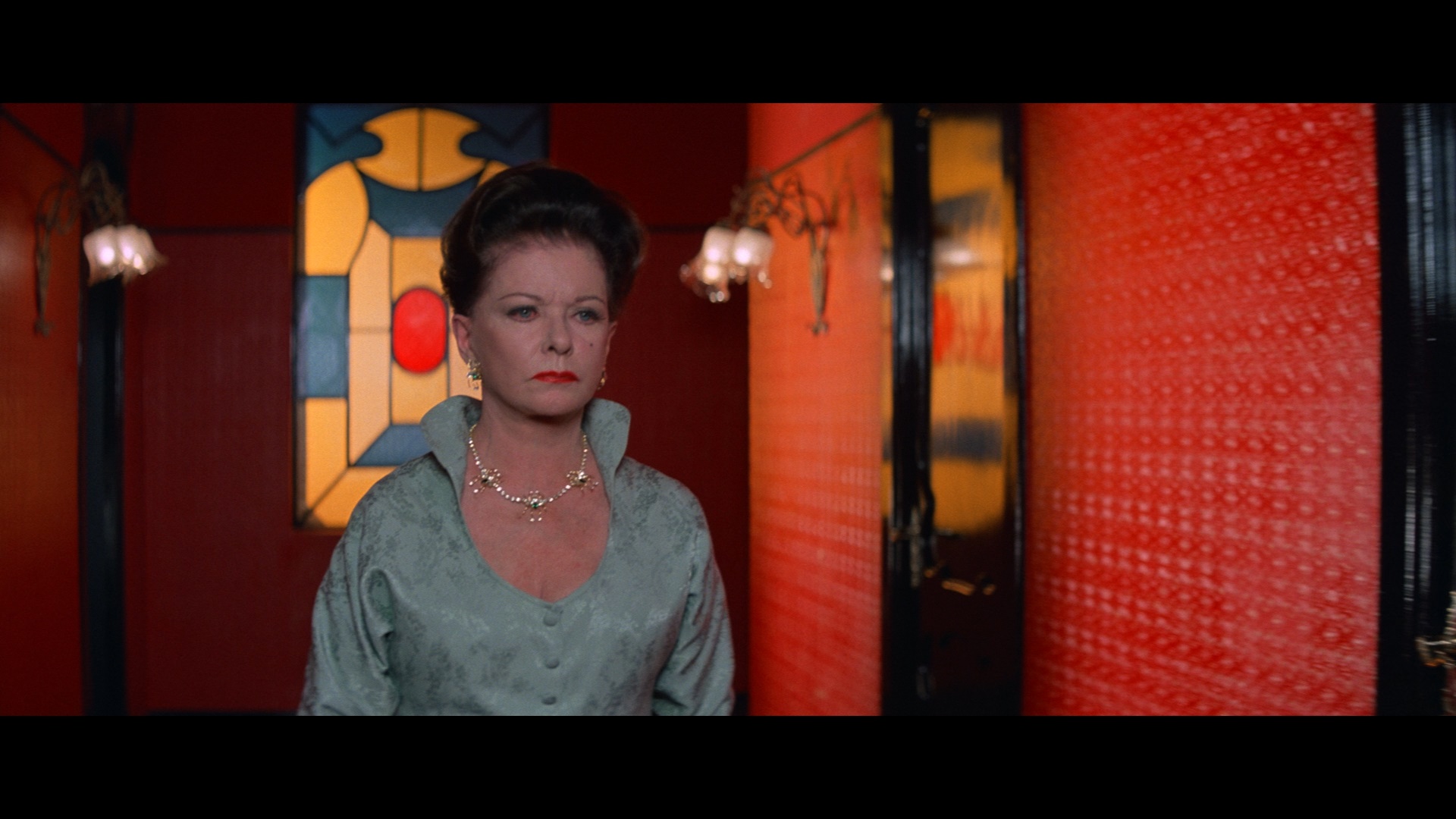 have the CD probably won't notice much of a difference, so the expanded (and much heavier) three-disc version is mainly recommended for the
have the CD probably won't notice much of a difference, so the expanded (and much heavier) three-disc version is mainly recommended for the 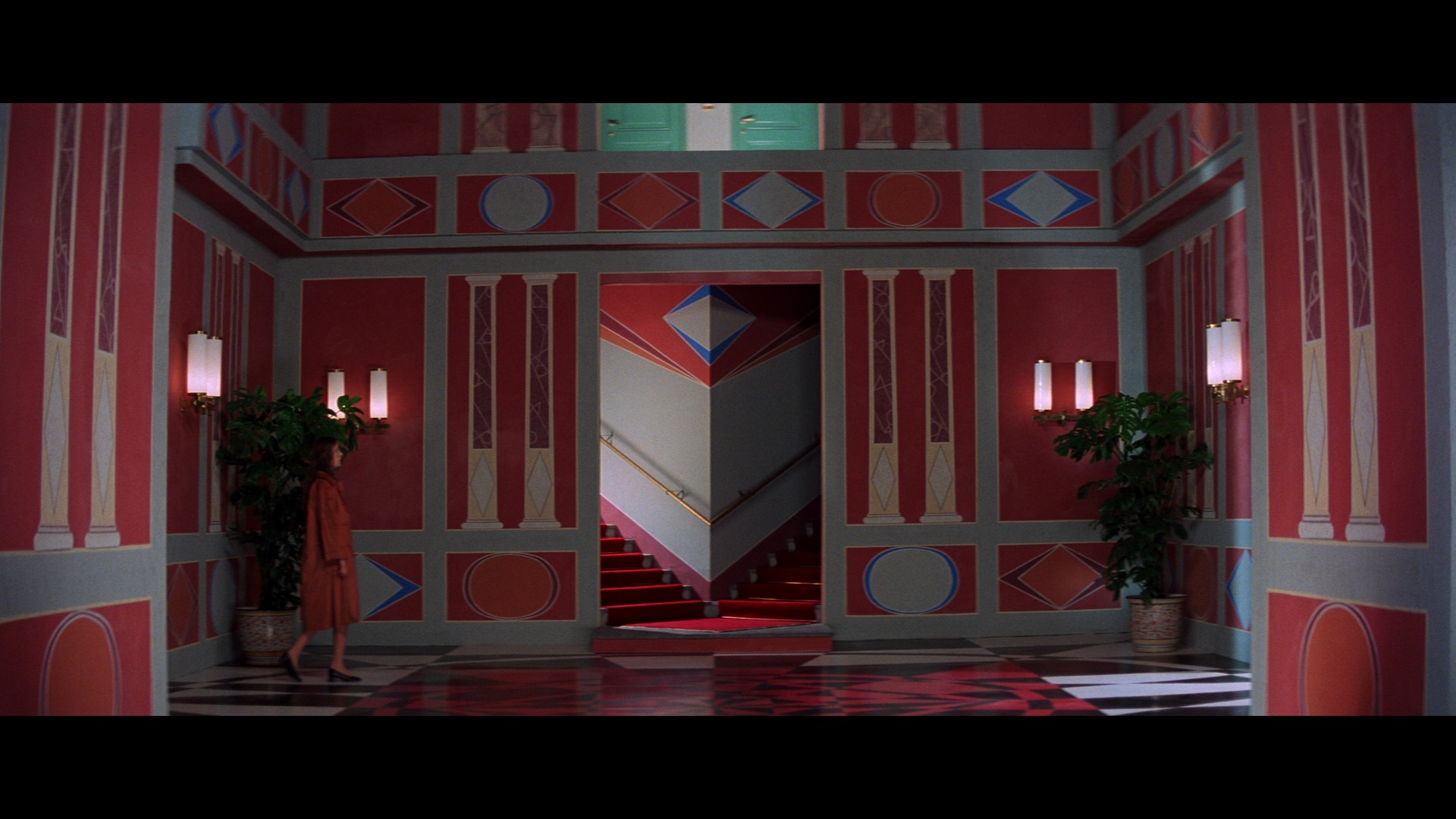 excellent documentary and its hefty printed materials: nine color lobby card and poster reproductions, and an extensive, color booklet with well written, informative liner notes by Travis Crawford and a printed interview with Harper which expands a bit on her comments in the documentary. The two DVDs were later reissued from Blue Underground with the same transfer and extras.
excellent documentary and its hefty printed materials: nine color lobby card and poster reproductions, and an extensive, color booklet with well written, informative liner notes by Travis Crawford and a printed interview with Harper which expands a bit on her comments in the documentary. The two DVDs were later reissued from Blue Underground with the same transfer and extras.
When news came that Suspiria would be restored under Luciano Tovoli's supervision and ramped out onto Blu-ray in 2012, expectations were high but then swiftly dashed when the transfer used for every initial release turned out to be a complete disaster. Contrast is pumped way too high with whites blown out throughout, starting out at a mildly annoying level and then growing completely unwatchable for the last 20 minutes. The color timing also goes haywire in the second half of the film, with the climax turned into a mess complete with a red haze over the closing shots outside the school for no apparent reason. Despite the obnoxious company tagline ("Taking Trash Seriously"), the British release from Nouveaux sounds the best of the bunch (about the same as the great American VHS/laserdisc mix), while the French one is the worst with only a mono(!) option for the English track. The UK one also wins out of that batch thanks to its excellent audio commentary by Alan Jones and Kim Newman as well as a "Fear at 400 Degrees" featurette (34m56s) with Cine-Excess' Xavier Mendik linking together interview sound bites with Newman, Dr. Patricia MacCormack,  Norman J. Warren, Goblin's Claudio Simonetti, and (via archival footage) Argento basically rehashing what an important film this is while taking a somewhat academic take on the film's transformative genre influence.
Norman J. Warren, Goblin's Claudio Simonetti, and (via archival footage) Argento basically rehashing what an important film this is while taking a somewhat academic take on the film's transformative genre influence.
Needless to say, there was plenty of room left for improvement, and Synapse Films immediately generated a tremendous amount of buzz in 2015 when it announced 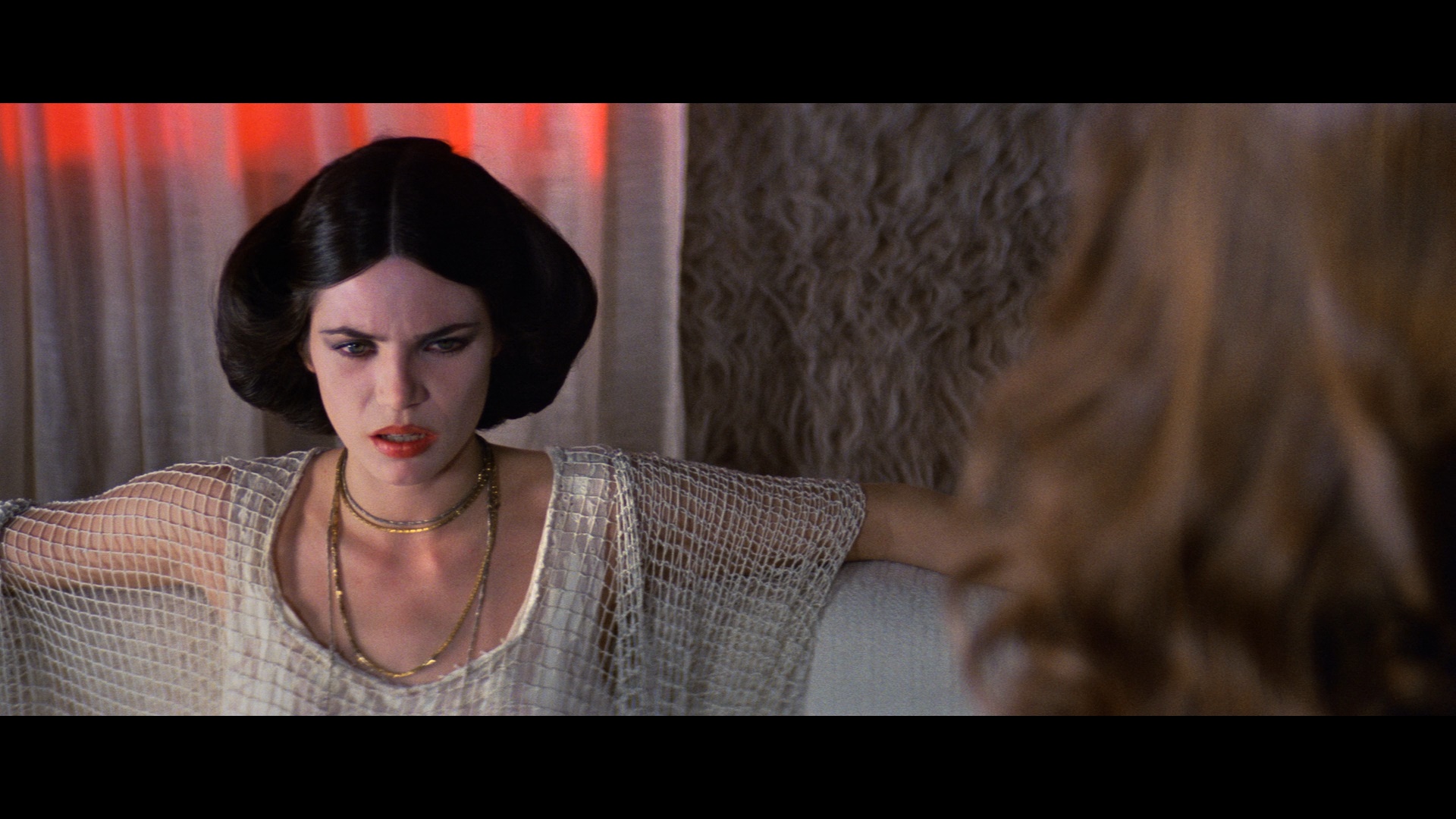 that it was going to unleash a new edition of the film. The process of doing a new 4K scan from the original negative turned out to be a daunting process due to mishandling from the prior transfer, but the end result turned out to be more than worth the effort with the restoration making numerous theatrical appearances in the U.S. before making its physical media bow as a limited two-disc steelbook set sold via the company's site and Diabolik. That was also the only one approved by Tovoli, but more on that in a moment. In the interim that same year, multiple other releases started popping up around the globe, first from Italy as separate DVD, Blu-ray, and 4K UHD/Blu-ray editions. That one gave an idea of what the new transfer looked like in terms of clarity, though the color timing featured a heavy lime cast through most of the running time. The same basic presentation with slight gradations in the amount of green was also used for releases in Germany (on Blu-ray as a mediabook or absurdly expensive leatherbook edition with a DVD) and Australian Blu-ray, the latter a stronger choice as it features a healthy batch of extras including the "400 Degrees" featurette, the Dario Argento: An Eye for Horror special available elsewhere on DVD, an exclusive 2004 Argento interview (21m15s) recorded directly to the camera in a movie theater with him explaining how this evolved as a change in style after Deep Red, a 40th anniversary Argento interview with Nick Vivarelli (27m14s) about the "city witch" inspiration and technical innovations behind the film's look, Michele Soavi's essential Dario Argento's World of Horror documentary, the original Anchor Bay featurette, and the usual trailers and TV spots. That release comes with the English track in two DTS-HD MA 5.1 options (the second much softer and less dynamic for no apparent reason), plus the Italian track (DTS-HD MA 5.1) with optional English subtitles (taken from the English dialogue, more or less).
that it was going to unleash a new edition of the film. The process of doing a new 4K scan from the original negative turned out to be a daunting process due to mishandling from the prior transfer, but the end result turned out to be more than worth the effort with the restoration making numerous theatrical appearances in the U.S. before making its physical media bow as a limited two-disc steelbook set sold via the company's site and Diabolik. That was also the only one approved by Tovoli, but more on that in a moment. In the interim that same year, multiple other releases started popping up around the globe, first from Italy as separate DVD, Blu-ray, and 4K UHD/Blu-ray editions. That one gave an idea of what the new transfer looked like in terms of clarity, though the color timing featured a heavy lime cast through most of the running time. The same basic presentation with slight gradations in the amount of green was also used for releases in Germany (on Blu-ray as a mediabook or absurdly expensive leatherbook edition with a DVD) and Australian Blu-ray, the latter a stronger choice as it features a healthy batch of extras including the "400 Degrees" featurette, the Dario Argento: An Eye for Horror special available elsewhere on DVD, an exclusive 2004 Argento interview (21m15s) recorded directly to the camera in a movie theater with him explaining how this evolved as a change in style after Deep Red, a 40th anniversary Argento interview with Nick Vivarelli (27m14s) about the "city witch" inspiration and technical innovations behind the film's look, Michele Soavi's essential Dario Argento's World of Horror documentary, the original Anchor Bay featurette, and the usual trailers and TV spots. That release comes with the English track in two DTS-HD MA 5.1 options (the second much softer and less dynamic for no apparent reason), plus the Italian track (DTS-HD MA 5.1) with optional English subtitles (taken from the English dialogue, more or less).
At the tail end of 2017, Cult Films (an offshoot of Shameless Screen Entertainment) offered its own dual-format Blu-ray and DVD edition, which not surprisingly tramples all over the previous Nouveaux UK edition and wisely brings the gold-standard Jones and Newman audio commentary and featurette back into domestic circulation. It also adds the Argento and Vivarelli interview and intro as well as a lengthy look at the 4K process by TLE Films (57m4s), which features some especially interesting peeks at the original raw scan before any damage repair. The Blu-ray exclusively contains an additional "Suspiria Perspectives" (40m31s) compilation of raw interview footage from the "400 Degrees" sessions with Simonetti, Warren and McComack doing more into depth about the films relationship to Italian '70s cinema and its impact on the European horror scene. In many respects this is actually more illuminating than the original featurette, especially with MacCormack explaining in more detail about the significance of the Italian North and South and how it was a defining factor on how gialli and horror films were made and received. Audio options for the main feature include DTS-HD MA English and Italian 5.1 and LPCM 2.0 tracks, based off of what sounds like the standard 2.0 mixes for both (essentially the English one sounds like what was heard on the laserdisc and not the botched Anchor Bay mix); one English subtitle option is included that more or less follows the English dialogue with a few little simplifications here and there. (Strangely, no release of Suspiria to date has included a faithful English subtitle translation of the Italian track.) Since this is also a direct presentation of the TLE restoration, it looks essentially identical to the Australian release (see grabs below). Note that the running time on the feature itself is considerably longer here (100m39s) due to a lengthy opening statement about the restoration process. A crowd-sourced 4K UHD and Blu-ray metal box was also released and sold out fairly quickly, featuring identical color timing to the earlier Blu-ray.
 Now, back to the Synapse release, which first appeared as that steelbook edition (which sold out quickly) and then again in 2018
Now, back to the Synapse release, which first appeared as that steelbook edition (which sold out quickly) and then again in 2018 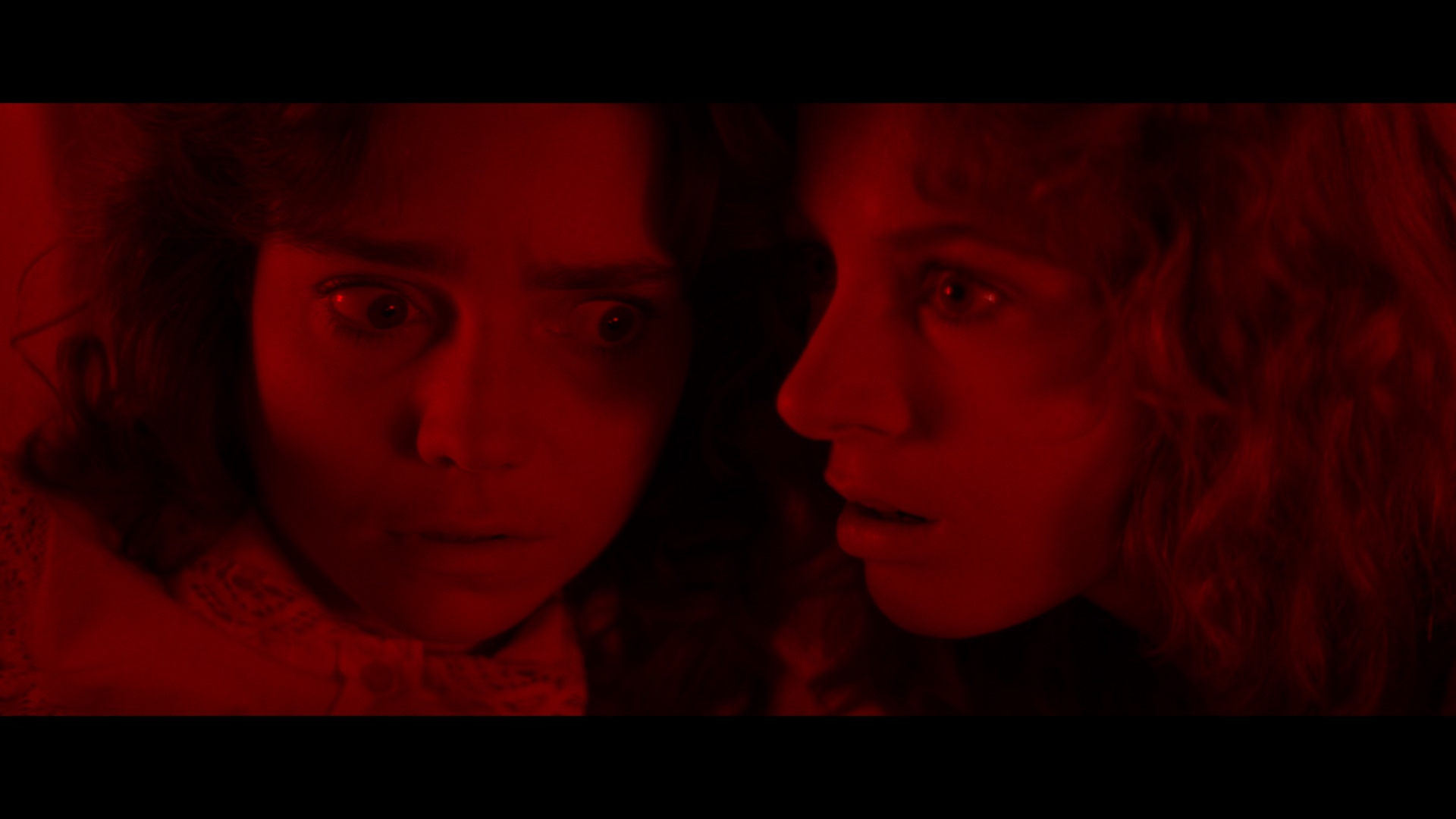 as a standard two-disc Blu-ray set with artwork by Joel Robinson, a single-disc Blu-ray, and a DVD if you're still in the SD world. It looks... well, perfect. The colors finally look dead on, detail is immaculate, and the whole film has an intensity you're unlike to experience anywhere outside of a freshly struck 35mm print. There's no UHD release in the works at the moment despite the fact that this was restored in 4K, but we can keep our fingers crossed it won't take too long given how remarkable it already looks here in 1080p. All the frame grabs in this review are from the Synapse release, obviously, with comparisons to a couple of the older ones below. However, as amazing as the video quality is, the sound has proven to be the real shocker here with an exclusive presentation of the original, legendary English 4.0 mix (DTS-HD -- in high-resolution 96kHz/24-bit audio to boot), which has never been heard on home video before (or even in a theater for the past few decades, as circulating prints are standard stereo or even mono). It's an absolute monster of a track with layers of sounds that will startle even those who have seen the film dozens of times, and the music really packs a punch now with so much presence it feels like a primary character in the film. Optional English SDH subtitles are included for the English track or English subtitles for the Italian audio (presented here in DTS-HD MA 5.1); the latter subs make a few tweaks for that track (Suzy's last name being "Banner," for example) but mostly function as dubtitles rather than a true translation, though the differences are relatively minor. The Italian version is also vastly inferior to the English one, with Harper in particular given a thin, reedy voice that doesn't suit her character well at all. (At least Valli voices herself in both, and quite well.) On a related note, the film can be played with either the Italian or International opening and closing credits.
as a standard two-disc Blu-ray set with artwork by Joel Robinson, a single-disc Blu-ray, and a DVD if you're still in the SD world. It looks... well, perfect. The colors finally look dead on, detail is immaculate, and the whole film has an intensity you're unlike to experience anywhere outside of a freshly struck 35mm print. There's no UHD release in the works at the moment despite the fact that this was restored in 4K, but we can keep our fingers crossed it won't take too long given how remarkable it already looks here in 1080p. All the frame grabs in this review are from the Synapse release, obviously, with comparisons to a couple of the older ones below. However, as amazing as the video quality is, the sound has proven to be the real shocker here with an exclusive presentation of the original, legendary English 4.0 mix (DTS-HD -- in high-resolution 96kHz/24-bit audio to boot), which has never been heard on home video before (or even in a theater for the past few decades, as circulating prints are standard stereo or even mono). It's an absolute monster of a track with layers of sounds that will startle even those who have seen the film dozens of times, and the music really packs a punch now with so much presence it feels like a primary character in the film. Optional English SDH subtitles are included for the English track or English subtitles for the Italian audio (presented here in DTS-HD MA 5.1); the latter subs make a few tweaks for that track (Suzy's last name being "Banner," for example) but mostly function as dubtitles rather than a true translation, though the differences are relatively minor. The Italian version is also vastly inferior to the English one, with Harper in particular given a thin, reedy voice that doesn't suit her character well at all. (At least Valli voices herself in both, and quite well.) On a related note, the film can be played with either the Italian or International opening and closing credits.
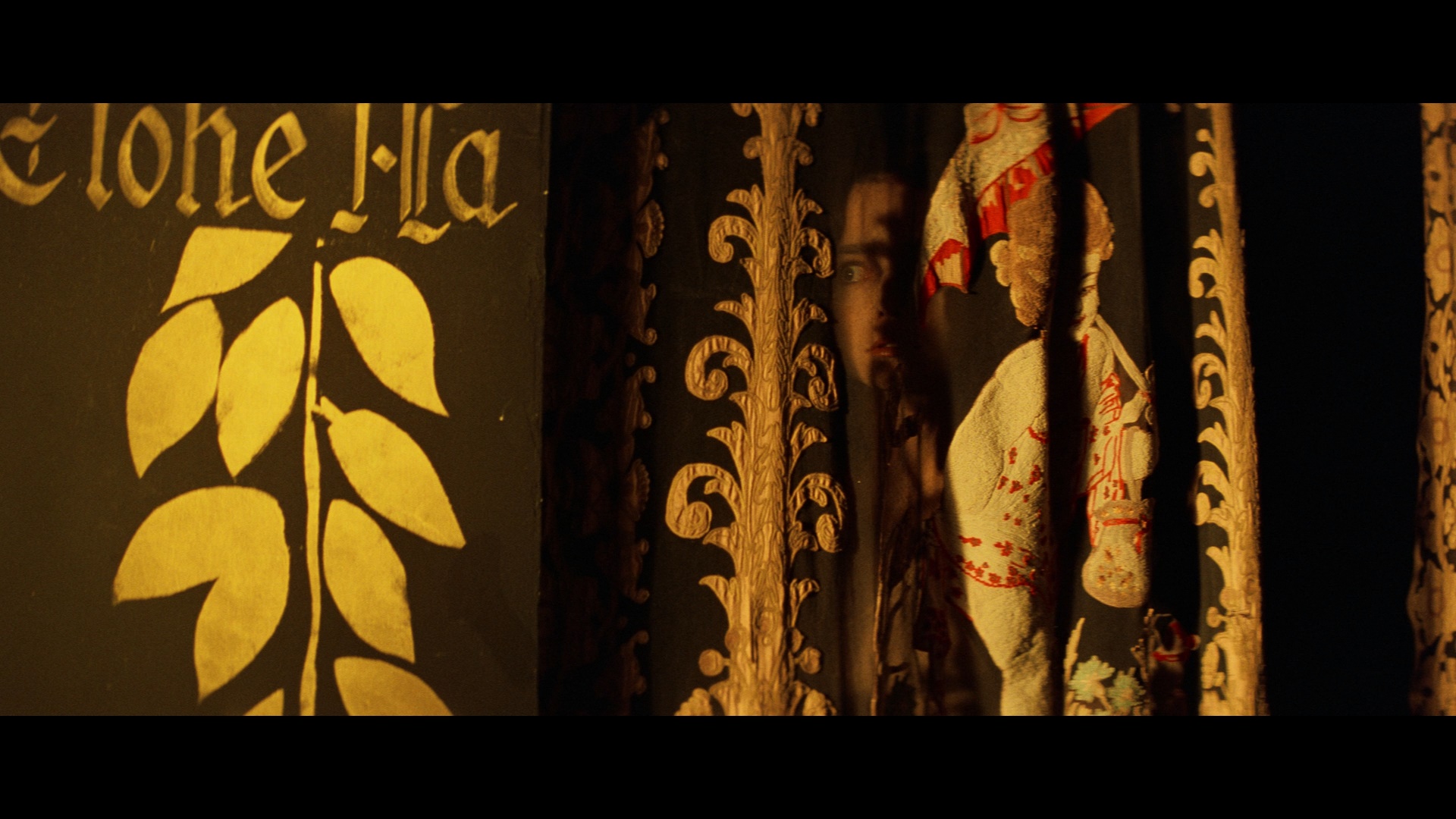 Disc one houses the main feature which can be played with a choice of two new audio commentaries, the first featuring writer Troy Howarth and
Disc one houses the main feature which can be played with a choice of two new audio commentaries, the first featuring writer Troy Howarth and 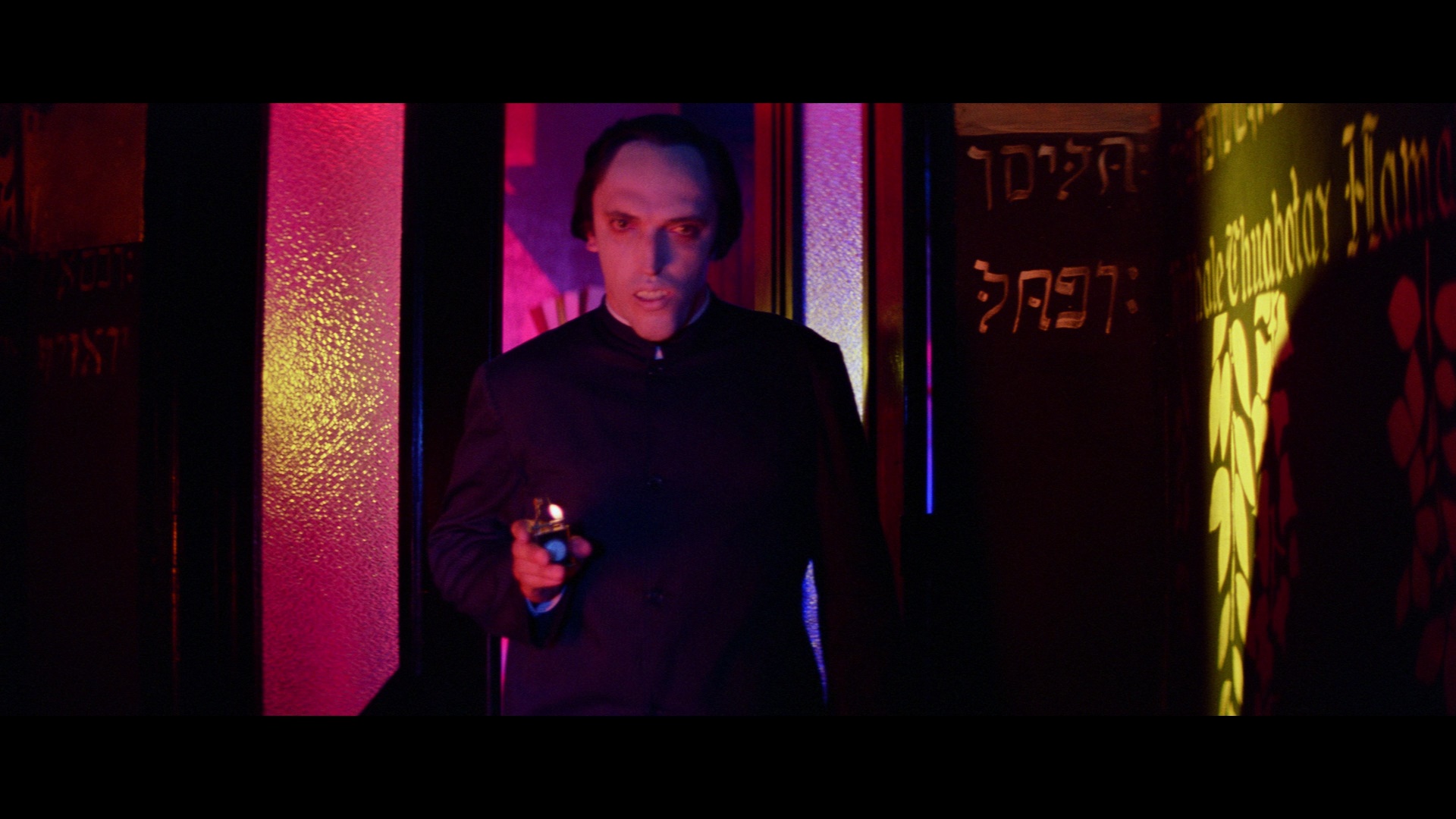 the second with The Argento Syndrome author Derek Botelho and David Del Valle (reprising their appearance from Phenomena). Anyone who's heard them before should have a fair idea of what to expect, with Howarth offering a deep dive into the backgrounds of the cast and crew with a wry turn of phrase popping up every couple of minutes; the Botelho and Del Valle one is looser and dishier while drawing comparisons to a number of classic English-language horror films. Disc two features all of the video extras, which are almost all along the scholar and fan appreciation side starting with the Ballyhoo featurette "A Sigh from the Depths: 40 Years of Suspiria" (27m7s) with participants like Rob Galluzzo, Botelho, Sean Keller, David E. Williams, Rebekah McKendry covering the Argento animal trilogy leading up to this, the Thomas De Quincey and fairy tale influence, and the Italian attitudes about the supernatural. The Michael Mackenzie essay "Do You Know Anything About Witches?" (30m6s) sketches out the Argento evolution from his five prior features to this one, the importance of Daria Nicolodi, and the aesthetic intensity that continues to hold sway over viewers today. The most unexpected extra is the Marcus Stiglegger-narrated "Suzy in Nazi Germany" (8m1s) by Sadi Kantürk, an illuminating guide to the Munich exteriors seen in the film and the connotations of a still fresh Nazi past (including its architecture and artwork) that weave into the subtext of the story from the Black Forest and Munich airport to BMW headquarters. The last of the featurettes, Red Shirt Pictures' "Olga’s Story" (17m14s), features the highly memorable Barbara Magnolfi talking about she got into acting, had an unusual audition for this film, trained for ballet dancing for a scene that ended up being cut, and formed a friendship with Argento over the course of filming during a wild time in Italian filmmaking. Finally you get the beloved "breathing letters" opening titles from the U.S. International Classics release (also used in all of the promotional material), a pair of U.S. trailers and the international one, a trio of TV spots, and five really fun U.S. radio spots.
the second with The Argento Syndrome author Derek Botelho and David Del Valle (reprising their appearance from Phenomena). Anyone who's heard them before should have a fair idea of what to expect, with Howarth offering a deep dive into the backgrounds of the cast and crew with a wry turn of phrase popping up every couple of minutes; the Botelho and Del Valle one is looser and dishier while drawing comparisons to a number of classic English-language horror films. Disc two features all of the video extras, which are almost all along the scholar and fan appreciation side starting with the Ballyhoo featurette "A Sigh from the Depths: 40 Years of Suspiria" (27m7s) with participants like Rob Galluzzo, Botelho, Sean Keller, David E. Williams, Rebekah McKendry covering the Argento animal trilogy leading up to this, the Thomas De Quincey and fairy tale influence, and the Italian attitudes about the supernatural. The Michael Mackenzie essay "Do You Know Anything About Witches?" (30m6s) sketches out the Argento evolution from his five prior features to this one, the importance of Daria Nicolodi, and the aesthetic intensity that continues to hold sway over viewers today. The most unexpected extra is the Marcus Stiglegger-narrated "Suzy in Nazi Germany" (8m1s) by Sadi Kantürk, an illuminating guide to the Munich exteriors seen in the film and the connotations of a still fresh Nazi past (including its architecture and artwork) that weave into the subtext of the story from the Black Forest and Munich airport to BMW headquarters. The last of the featurettes, Red Shirt Pictures' "Olga’s Story" (17m14s), features the highly memorable Barbara Magnolfi talking about she got into acting, had an unusual audition for this film, trained for ballet dancing for a scene that ended up being cut, and formed a friendship with Argento over the course of filming during a wild time in Italian filmmaking. Finally you get the beloved "breathing letters" opening titles from the U.S. International Classics release (also used in all of the promotional material), a pair of U.S. trailers and the international one, a trio of TV spots, and five really fun U.S. radio spots.
Anyone who wondered why Synapse didn't jump into the UHD fray right away had that question answered in late 2019 with the release of a 4K UHD disc packaged with a second Blu-ray replicating the earlier second disc described above. The UHD disc features the film in insanely vibrant 4K, looking even punchier and more refined than the DCP that circulated and featuring some additional clean-up work on some very minor film-related issues due to the insane level of clarity. HDR helps the colors have a higher degree of variation and gradation as well with the darker scenes boasting a nicely handled presentation of deep blacks as well. Again the film can be played with either the Italian or English opening and closing titles (the former looking visibly better), and both commentaries have been ported over along with the spectacular DTS-HD 4.0 English mix and the Italian 5.1 track with English subtitles; however, you also get a truly wild new Dolby Atmos mix that goes nuts with the channel separation effects. You get to hear the Goblin score spread all over the place here (including over your head in some subtle but effective ways) and some scenes are now far more aurally aggressive than before, such as the makeshift dormitory scene that pushes the music and sighing through the roof in the rear channels. Some subtle corrections have been made to the track as well to some sync issues baked into the original mix (keep an eye on Casini's line readings), so think of this as a fun party mix option to throw on compared to the traditional 4.0 option we've all come to know and love.
Synapse Films (US Blu-ray)
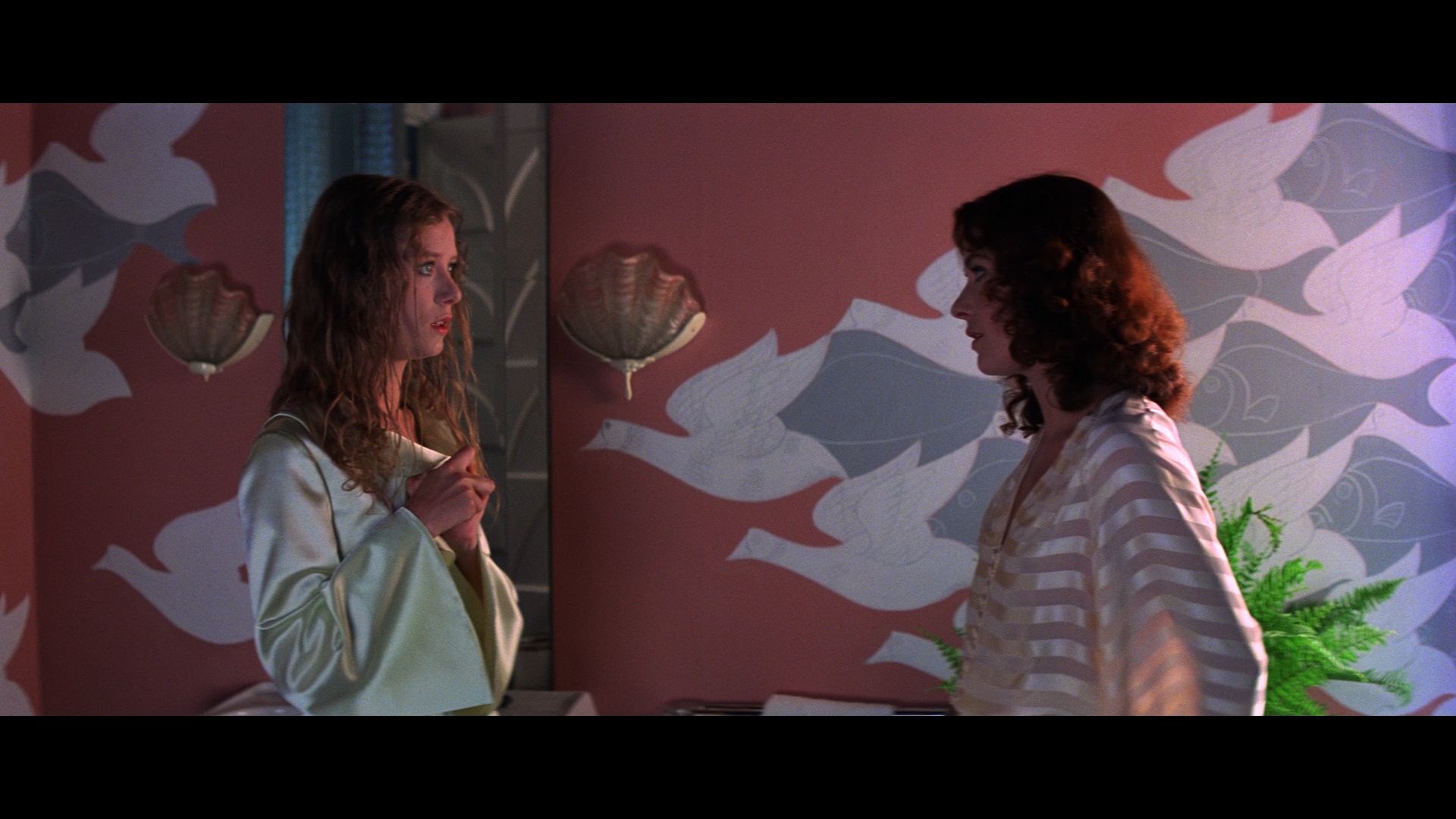

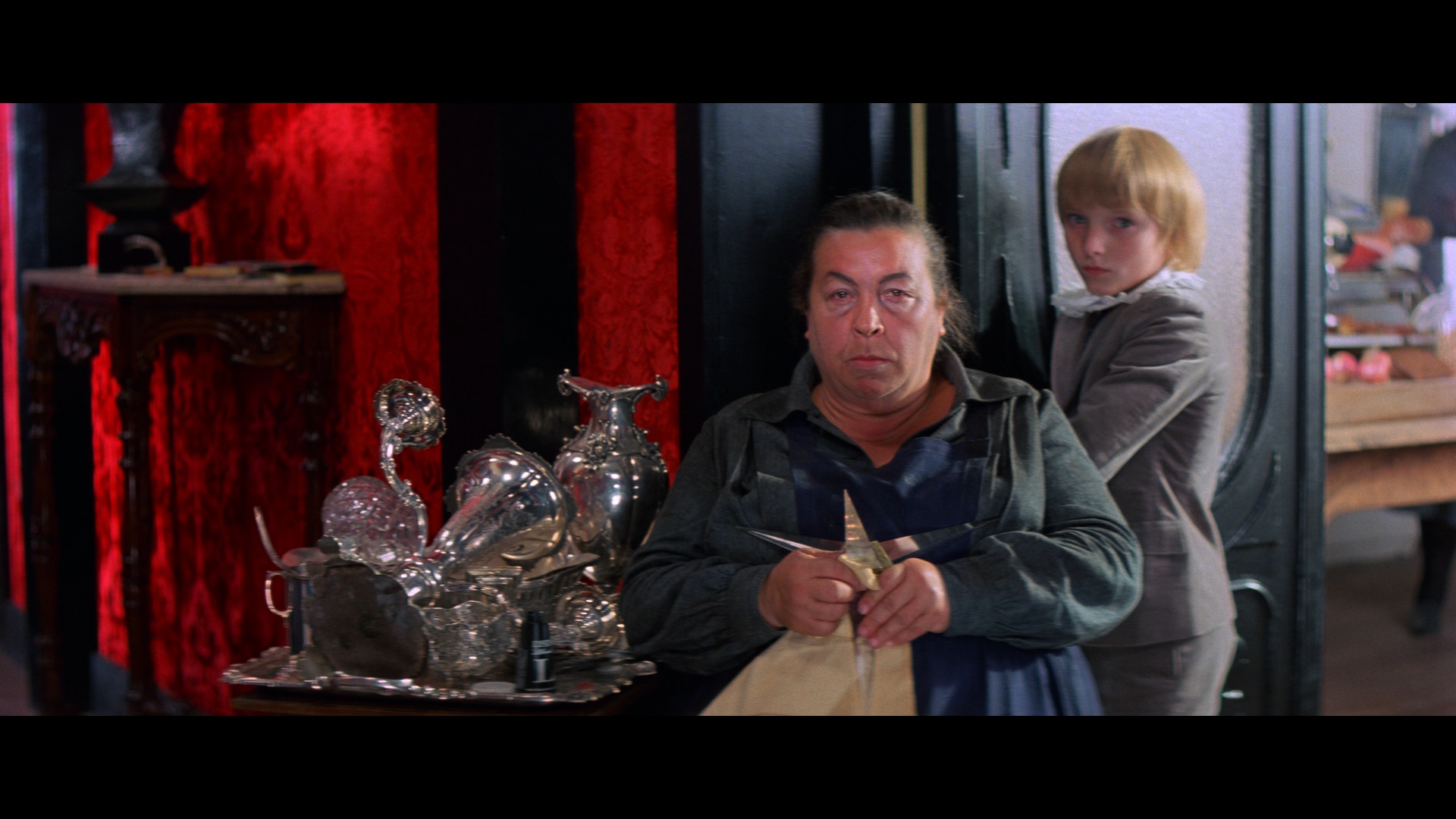
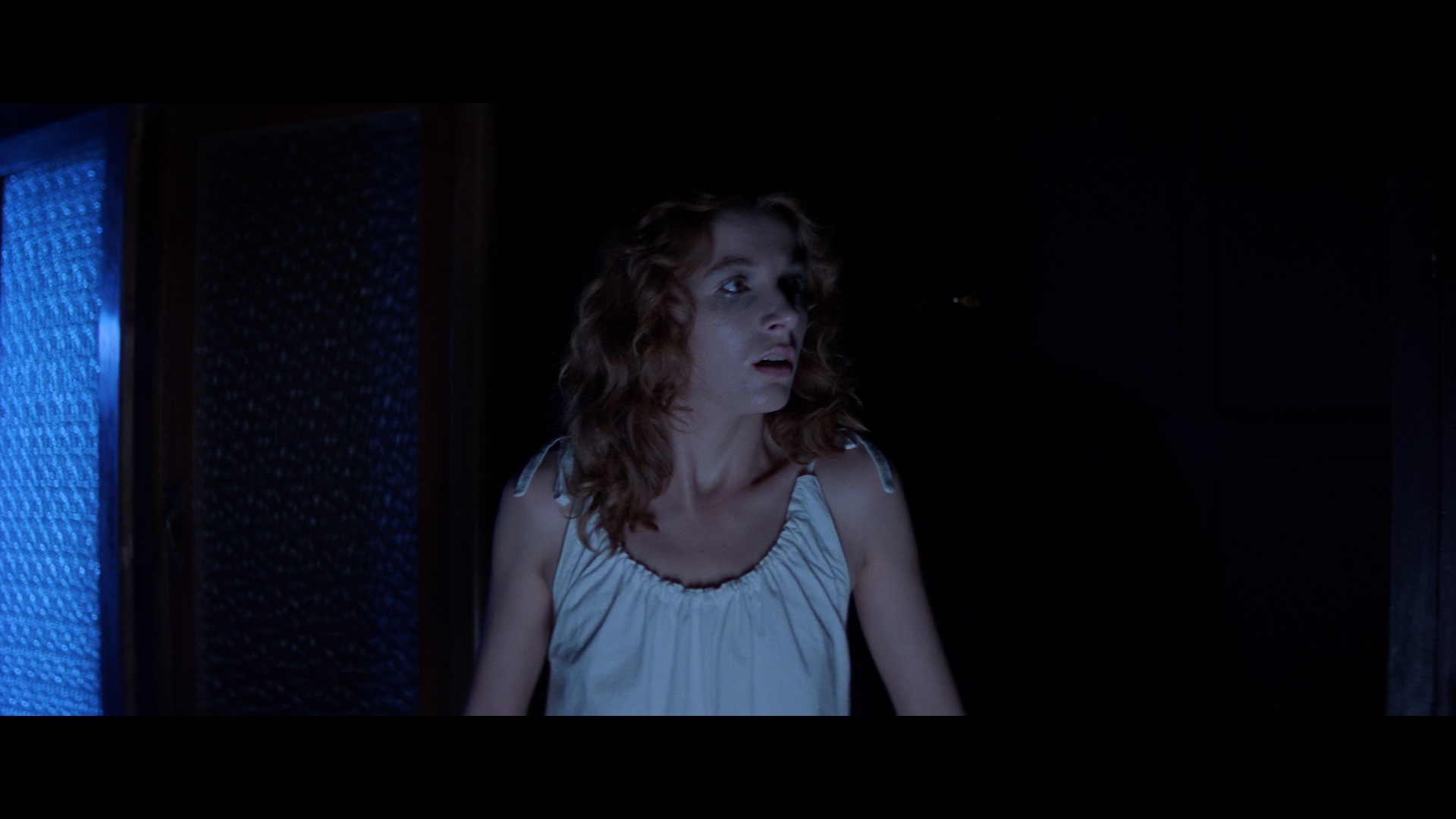

Cult Films (UK Blu-ray)

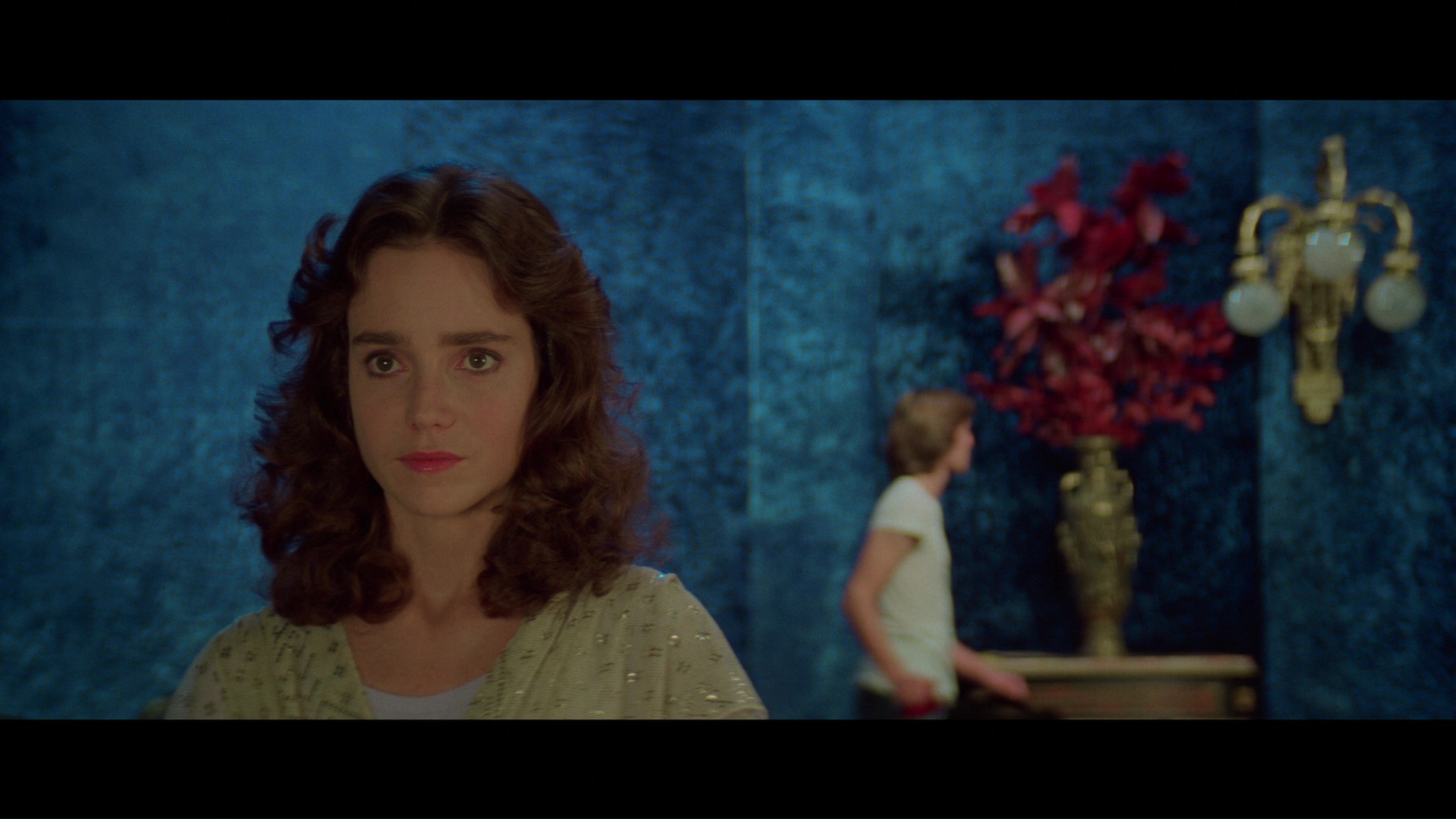
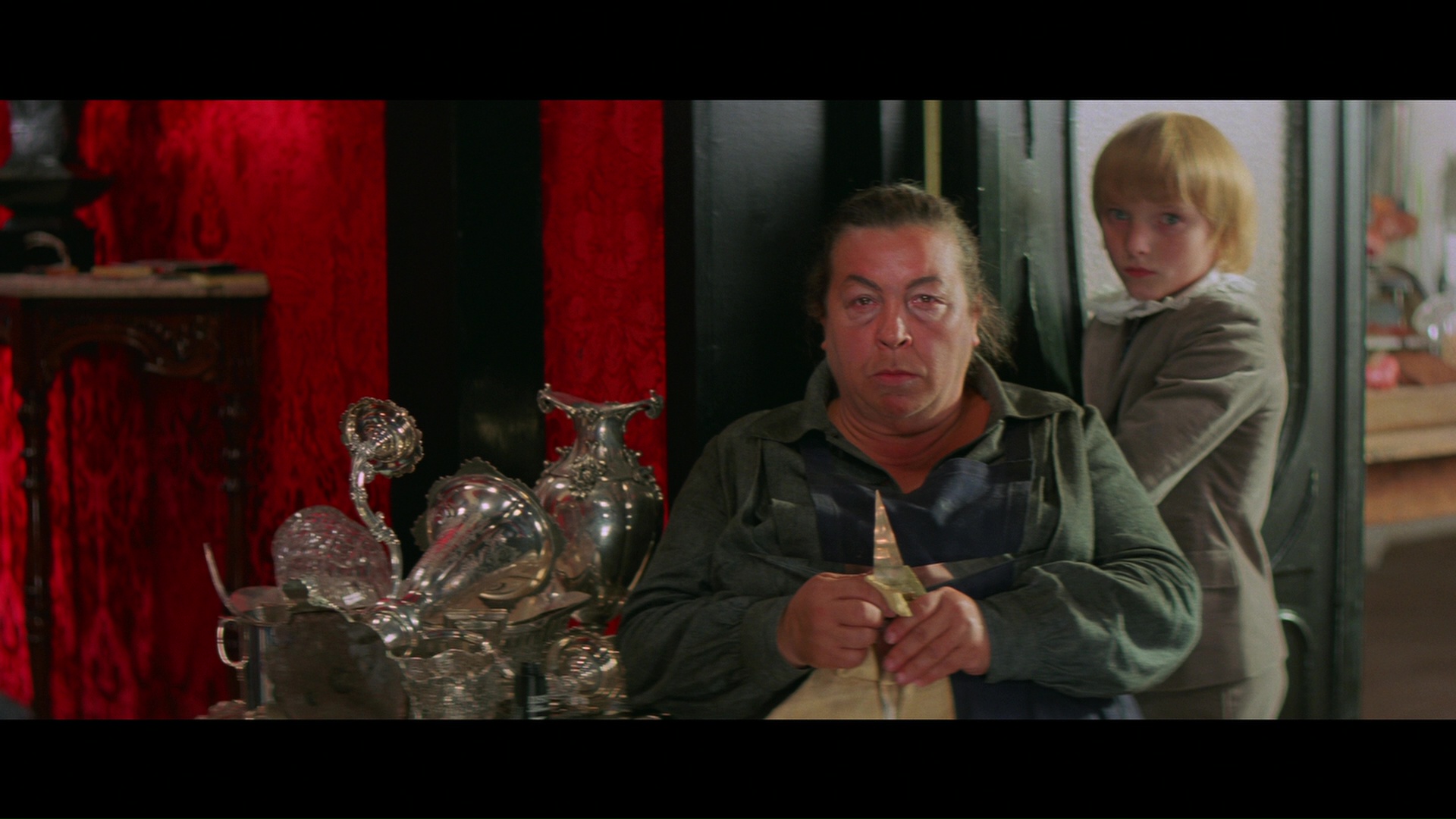
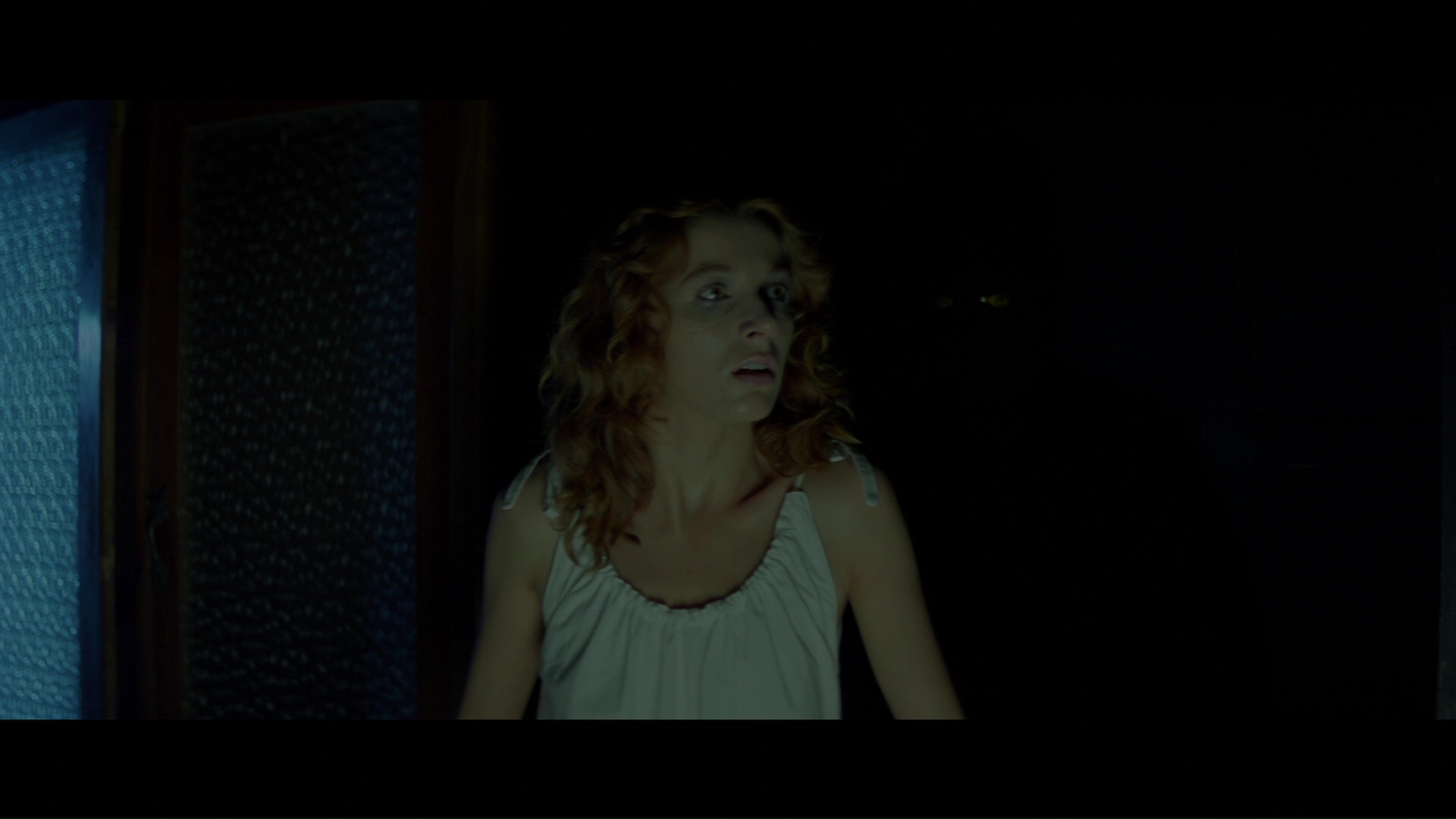
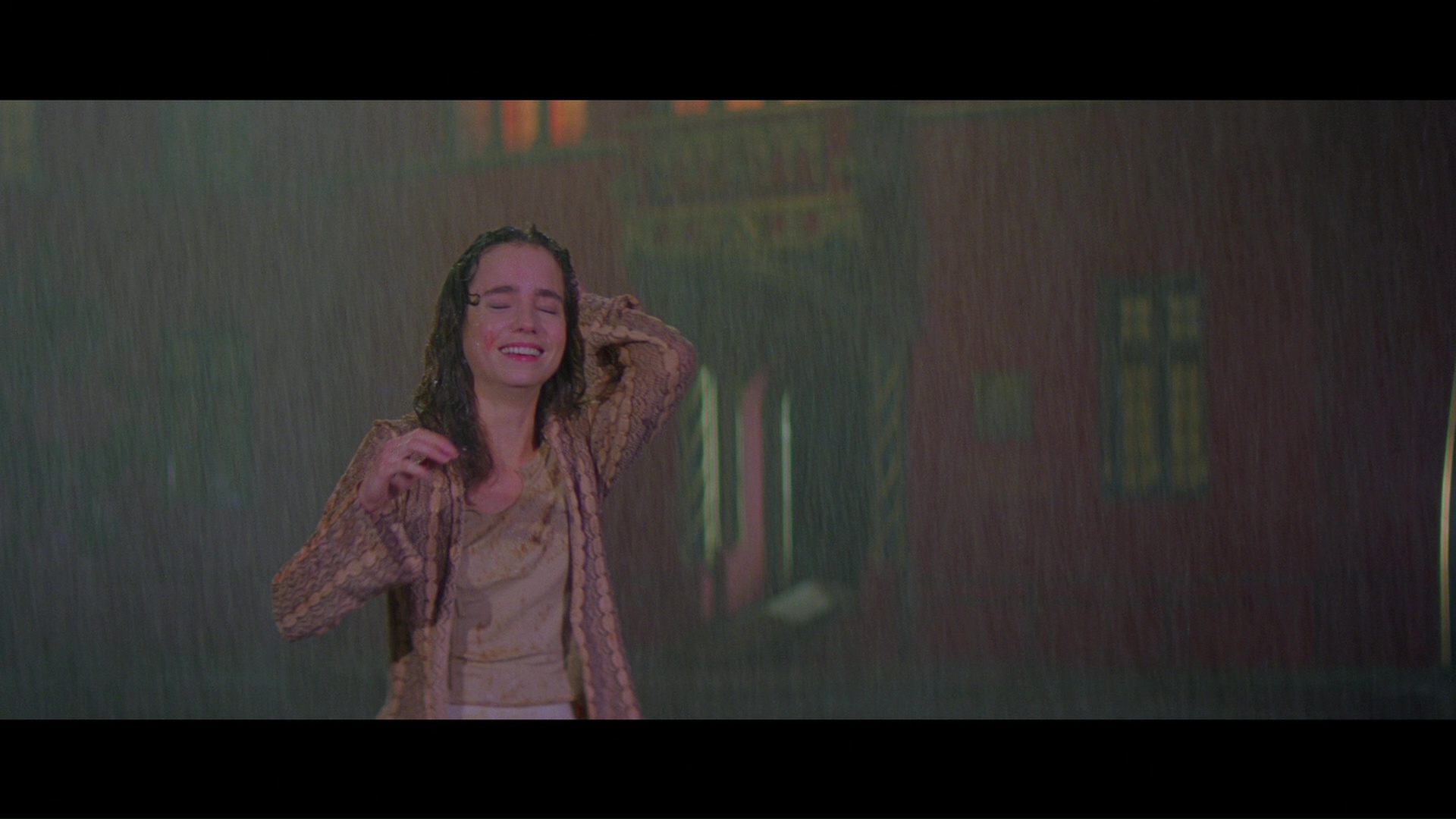
Umbrella (Australia Blu-ray)

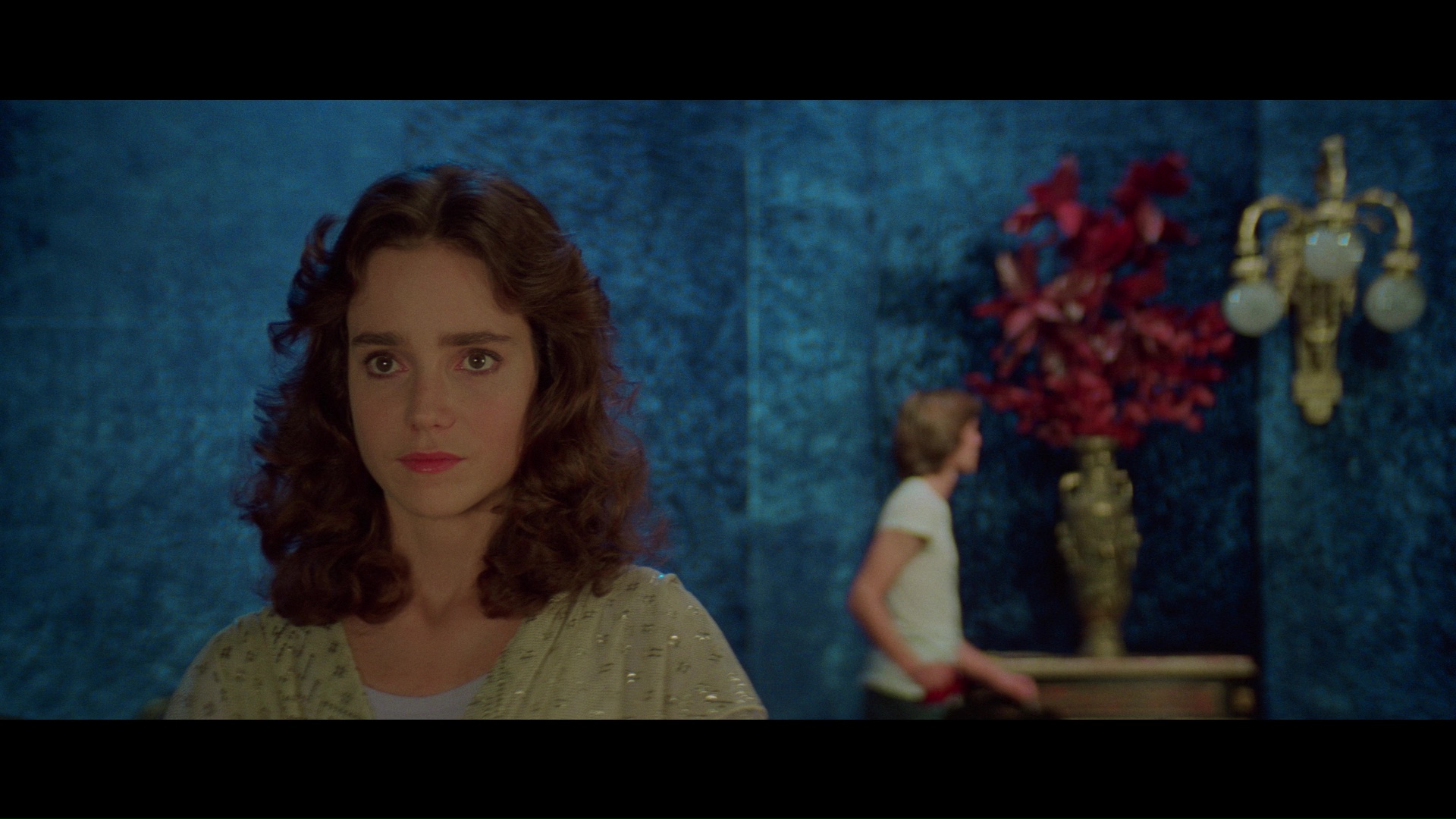
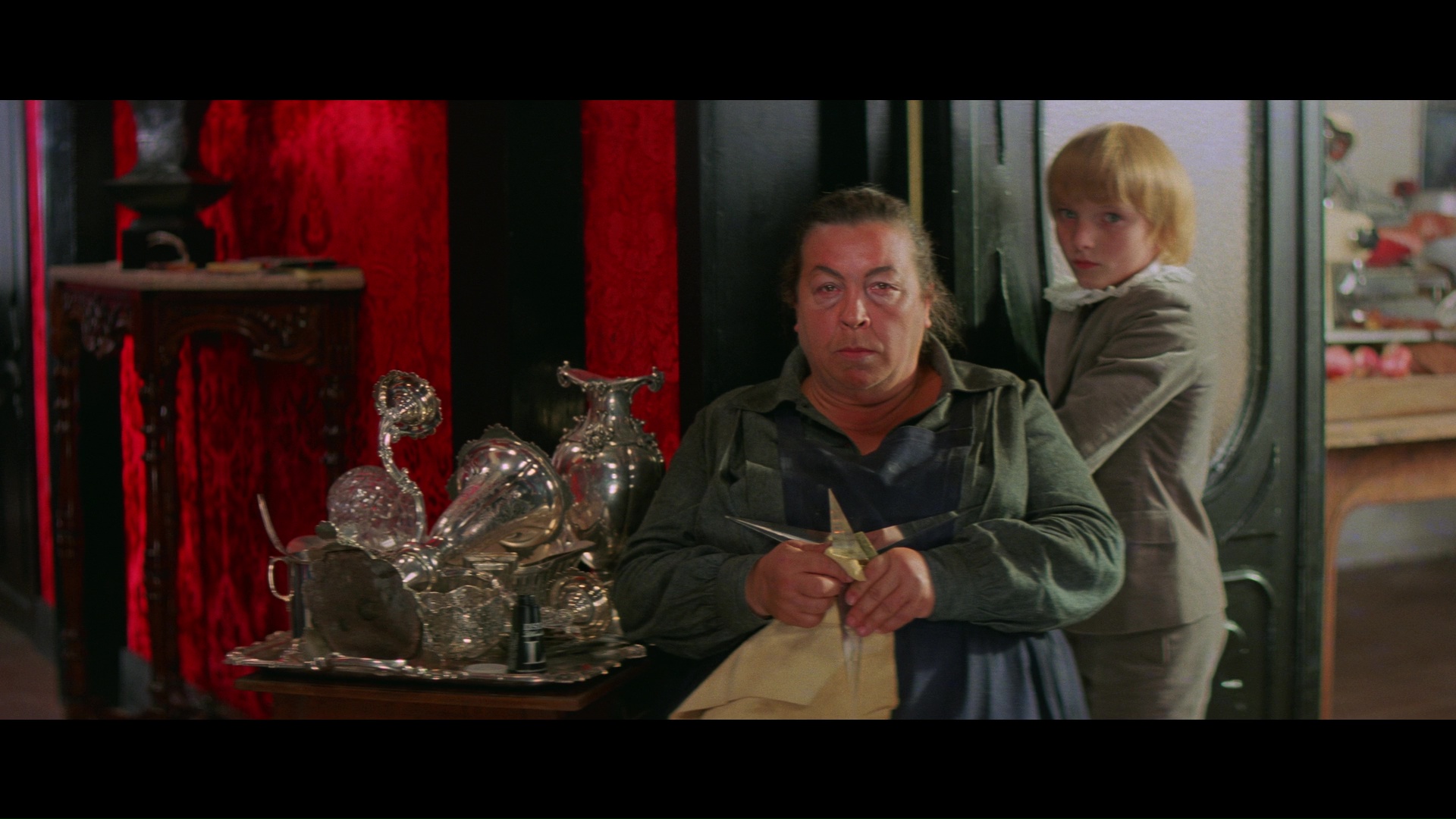
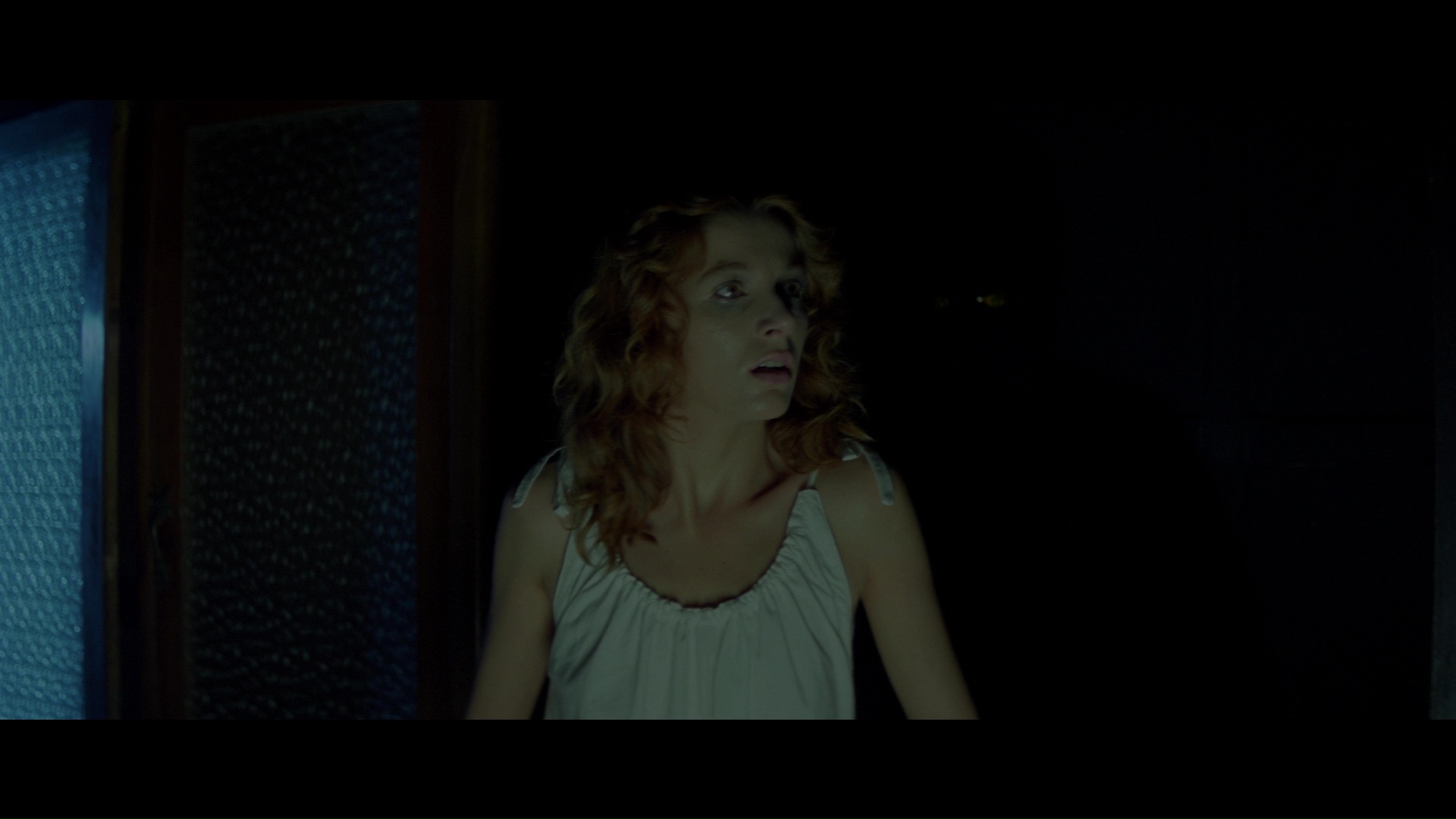
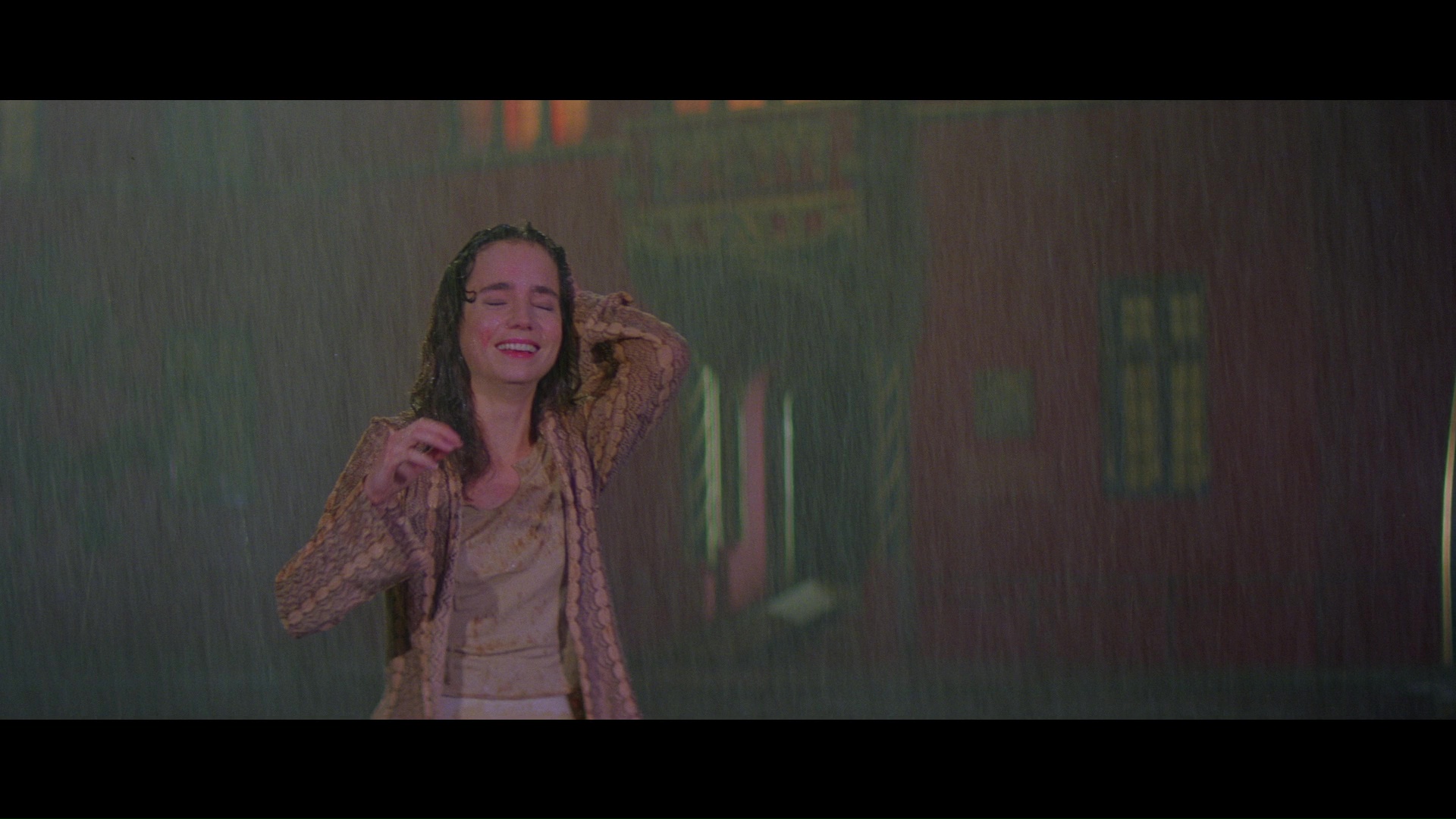
Nouveaux (UK Blu-ray) / Wild Side (France Blu-ray)
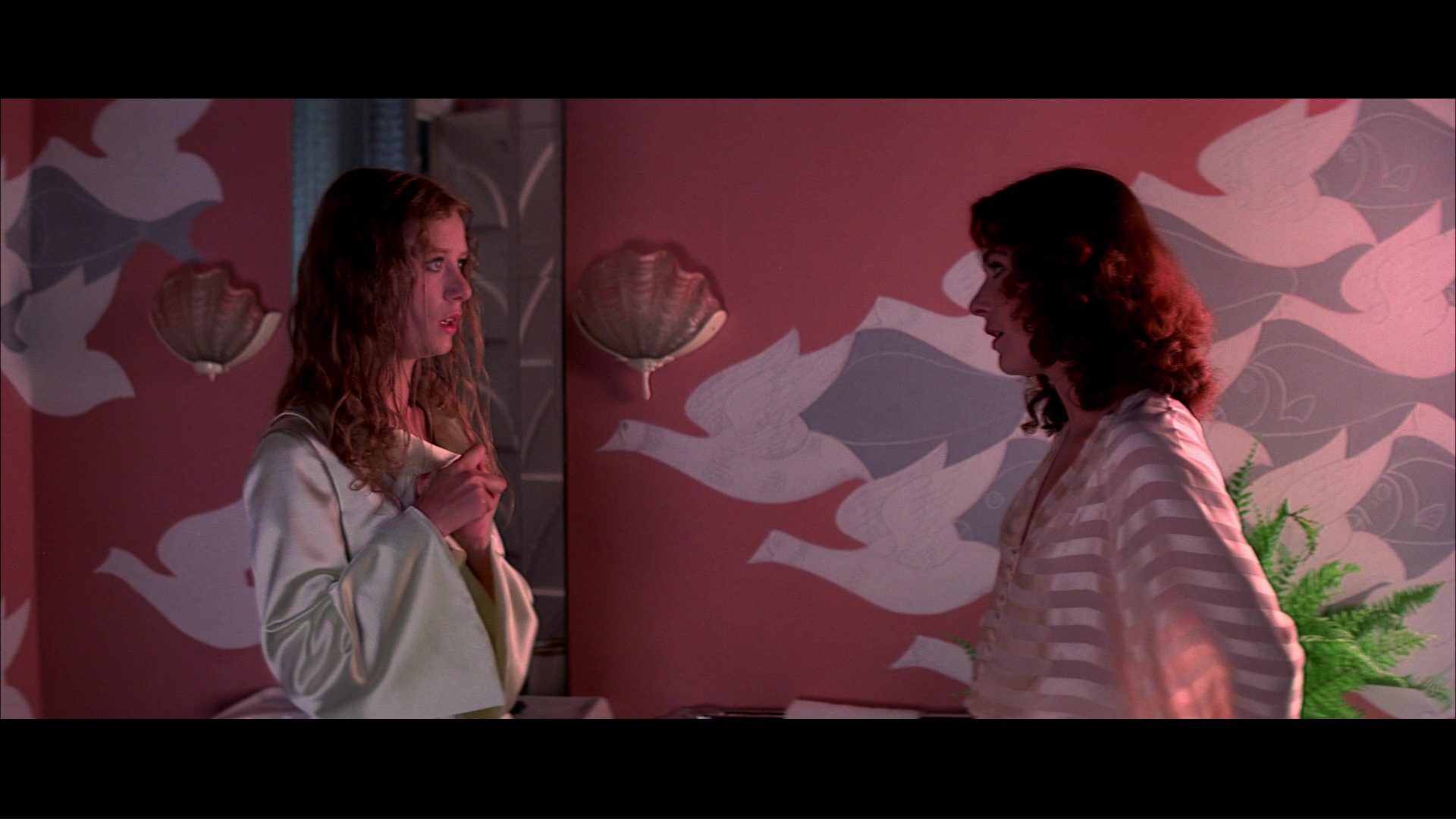
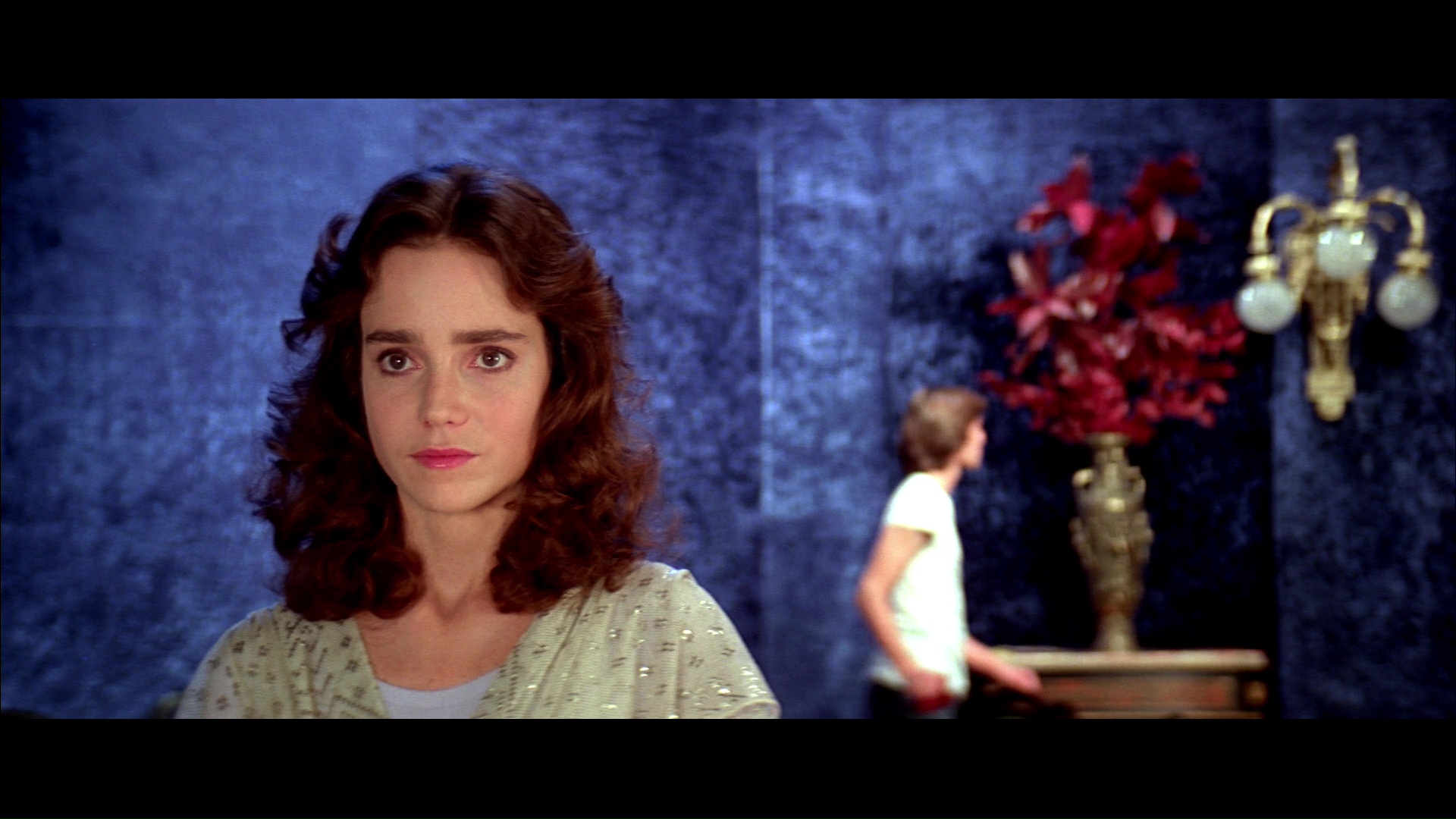
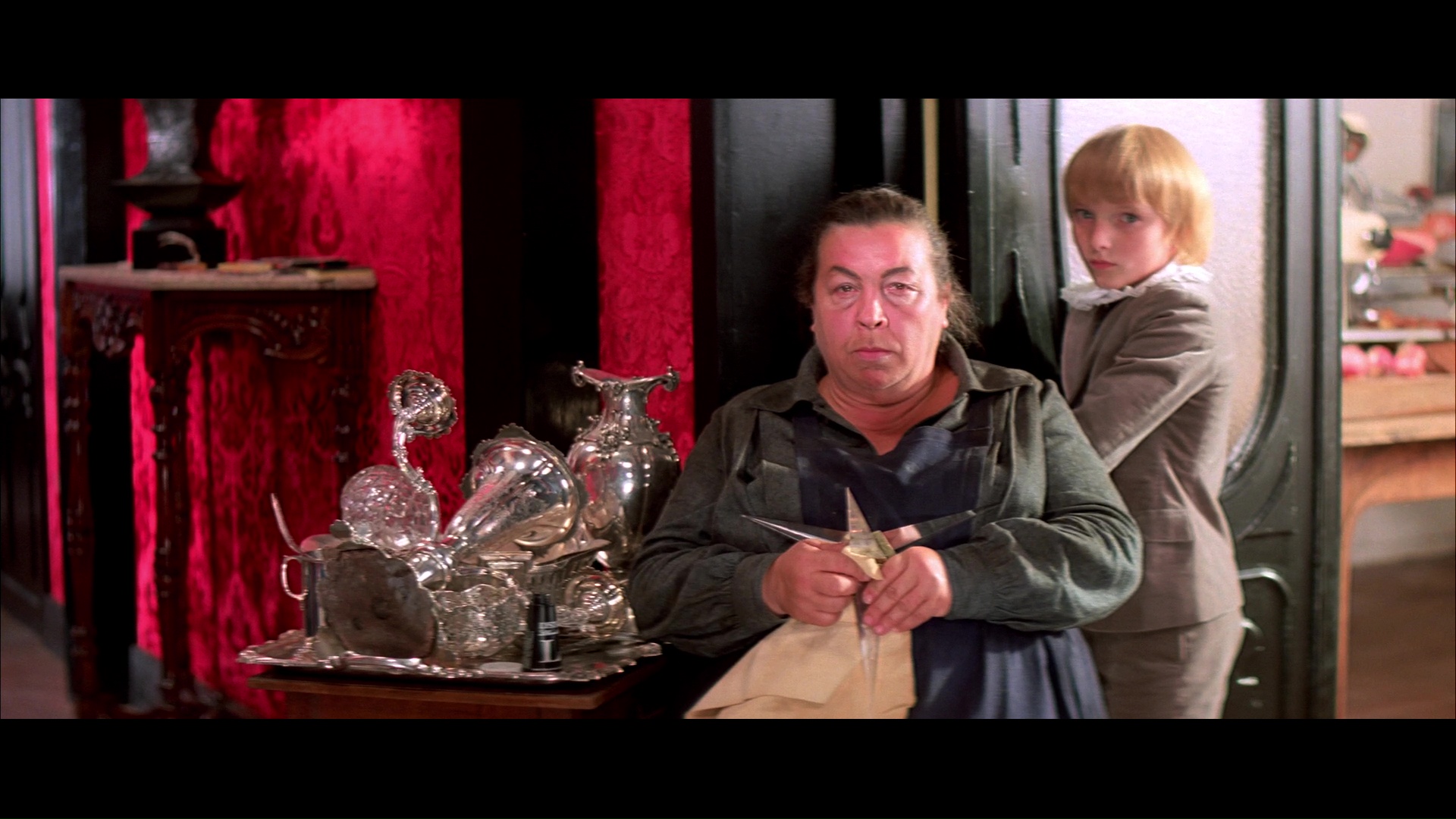
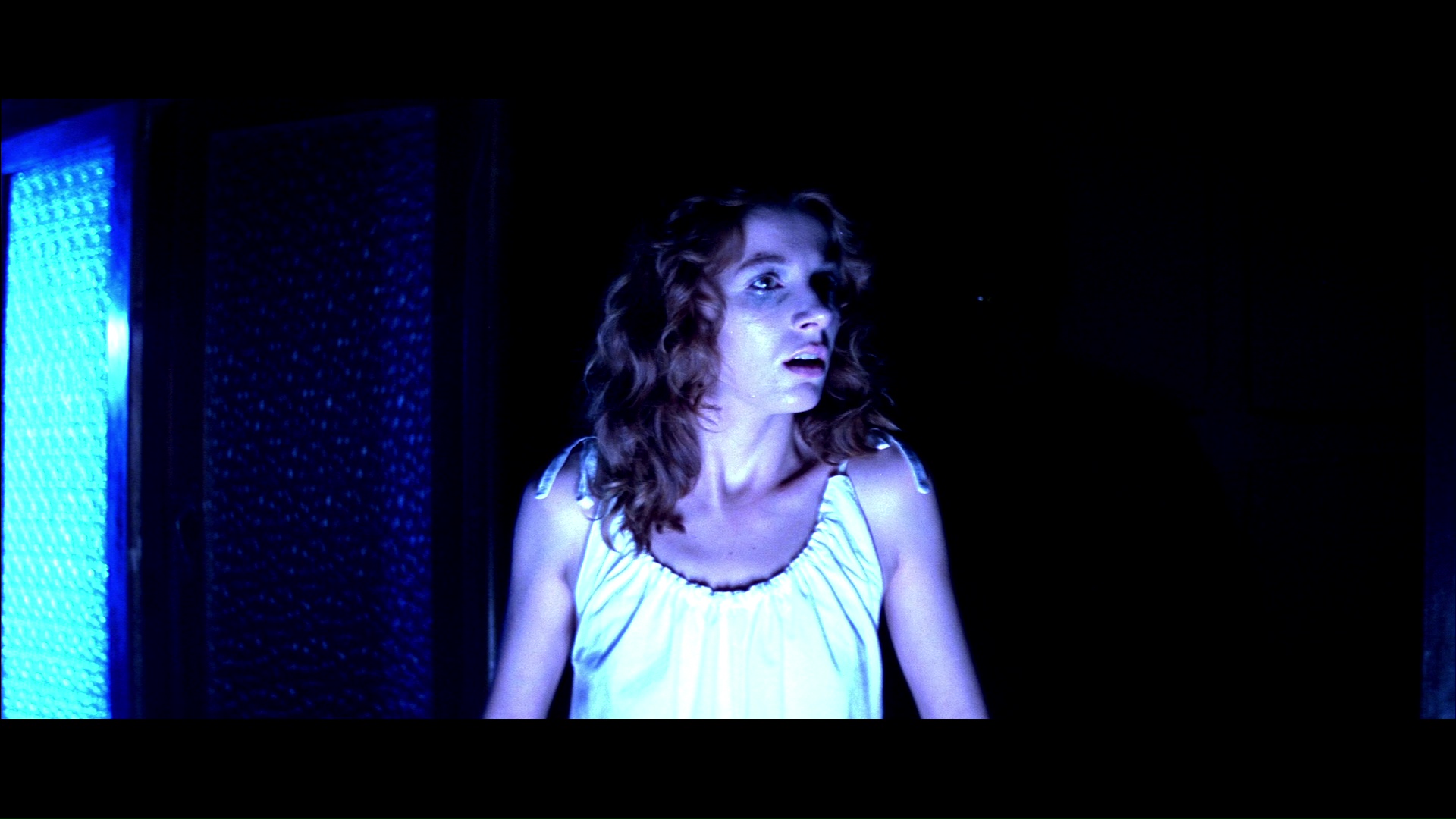
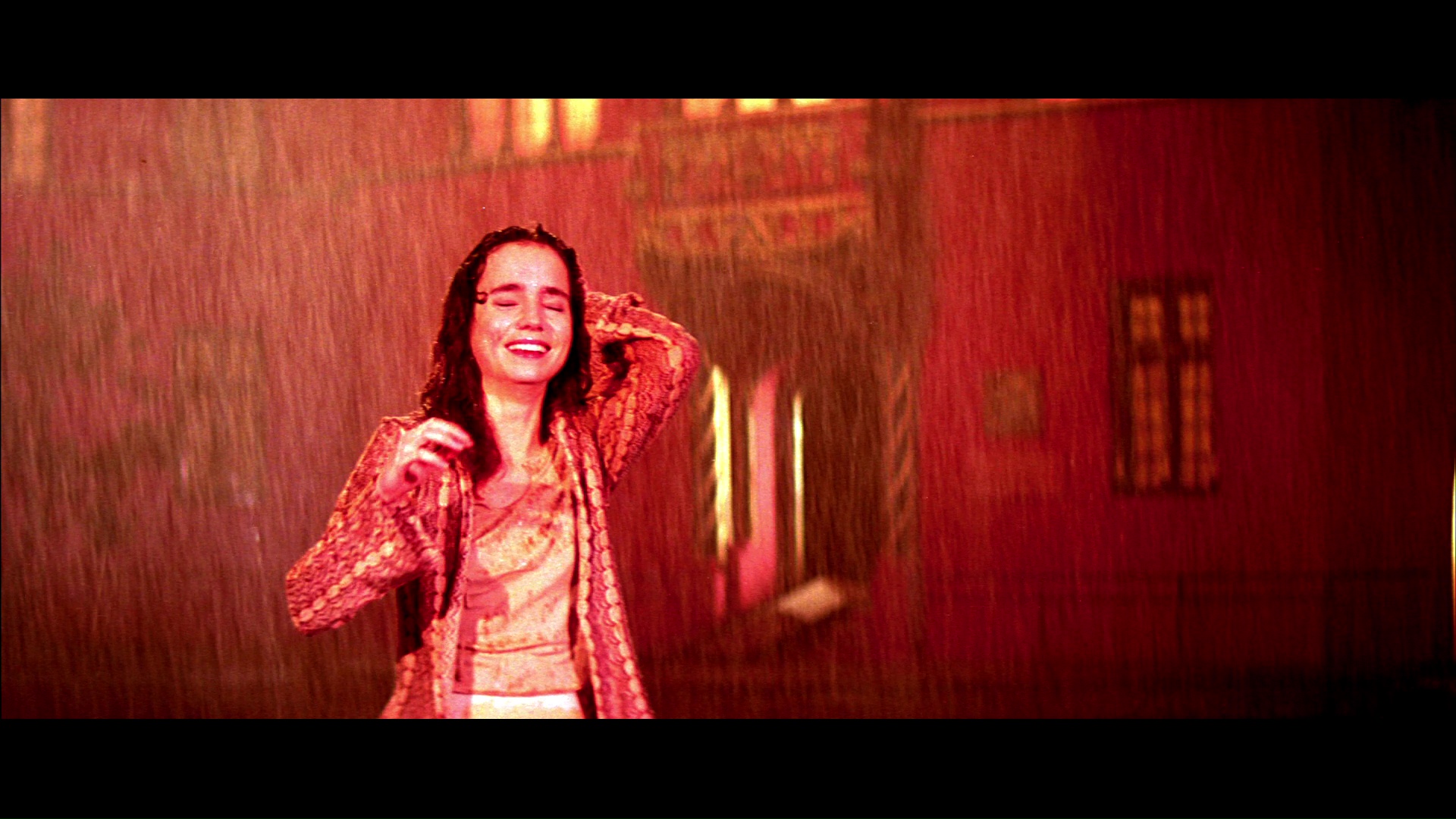
Anchor Bay / Blue Underground (US DVD)


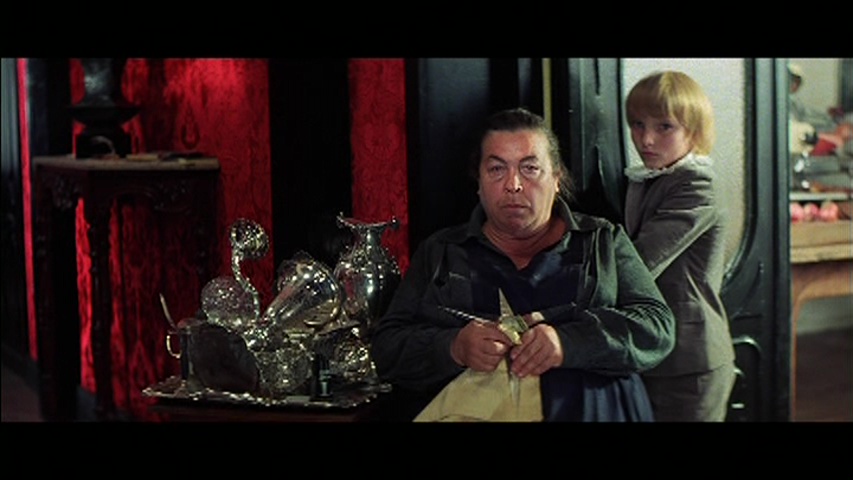
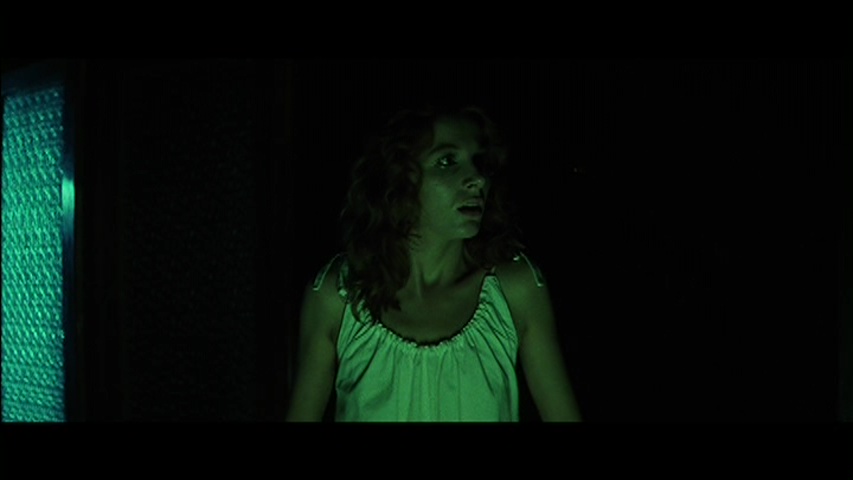
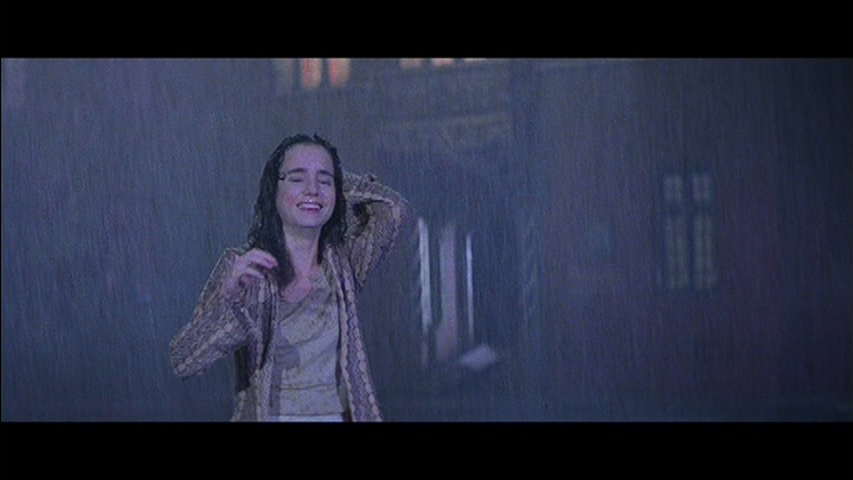
Updated review on October 15, 2019.


 you see it as a glorious celebration
you see it as a glorious celebration  of cinematic style or a simple exercise in flashy visuals at the expense of content, Suspiria is a difficult experience to forget. Apart from its secured status as one of the most visually ravishing horror films, Suspiria stops at nothing to keep the audience in its grip and marks a radical departure from the rigorous narrative manipulation of Deep Red. Here the story offers few genuine surprises; instead, the pleasure lies in the bizarre little side roads it takes along the way, offering up a seemingly boundless array of nasty delights at 24 frames per second. Here the random, illogical plotting and mannered acting which would normally cripple a film instead become assets, creating the disorienting air of a nightmare which must simply be accepted in order to enjoy the ride.
of cinematic style or a simple exercise in flashy visuals at the expense of content, Suspiria is a difficult experience to forget. Apart from its secured status as one of the most visually ravishing horror films, Suspiria stops at nothing to keep the audience in its grip and marks a radical departure from the rigorous narrative manipulation of Deep Red. Here the story offers few genuine surprises; instead, the pleasure lies in the bizarre little side roads it takes along the way, offering up a seemingly boundless array of nasty delights at 24 frames per second. Here the random, illogical plotting and mannered acting which would normally cripple a film instead become assets, creating the disorienting air of a nightmare which must simply be accepted in order to enjoy the ride.
 the grounds after suffering an embarrassing collapse during class, her entire floor must vacate to the gym for a sleepover after a particularly nasty maggot infestation, and anyone who
the grounds after suffering an embarrassing collapse during class, her entire floor must vacate to the gym for a sleepover after a particularly nasty maggot infestation, and anyone who  crosses the powers that be seems to meet wind up missing or dead. Along with her only friend, Sara (Casini), Suzy pieces together the puzzle that leads t o a dramatic supernatural finale.
crosses the powers that be seems to meet wind up missing or dead. Along with her only friend, Sara (Casini), Suzy pieces together the puzzle that leads t o a dramatic supernatural finale. 

 even those on the already heavily saturated Japanese laserdisc. The snoring directress
even those on the already heavily saturated Japanese laserdisc. The snoring directress  scene in which Harper and Casini are bathed in solid red lighting benefited especially from the added resolution, as Harper's nicely modulated facial reactions can now be appreciated without any ruinous smearing or smudging. The horizontally squished appearance of the earlier widescreen version was also corrected. Superficially the soundtrack appears to be a dynamic, thunderous presentation of the film, with the spectacular Goblin score beautifully separated between each channel and dialogue still creatively spread out between the front and center channels. However, it's worth noting that this is not a tweaked Dolby Digital/DTS presentation of the familiar stereo version we've all grown to know and love. On this DVD, many of the sound effects are completely different, and several odd vagaries pop up compared to earlier English language versions. Among the most notable differences (with some spoilers, so beware): Pat's shouted statement at the front door during the rainstorm is now partially silent, making it impossible to make out her words even when one knows what she is saying; after Pat says "I'd like to dry off" at the beginning, the door slam behind her is now a soft thud instead of the earlier split-channel slam; the eyes glaring at Pat through the window are accompanied by a shorter, more muted sound effect stinger; the cries of "Help me" during the first murder have been reduced and are much softer; the growling heard inside the school hallway when Albert is attacked by the seeing eye dog is different and much more subdued; the whispering voices emanating during the beginning of Sarah's nocturnal pursuit through the building are not the same, and the sounds heard during the close up of the razor being removed are edited differently. On the other hand, when Suzy observes Madame Blanc and company undergo their witch ritual, Miss Tanner has a previously obscured line of dialogue when she leans forward: "She wouldn't eat or drink anything this evening." The thunder effects which occur in the same scene to coincide with the red flashes of light (as Blanc utters "Sickness! Sickness!") are now missing, too.
scene in which Harper and Casini are bathed in solid red lighting benefited especially from the added resolution, as Harper's nicely modulated facial reactions can now be appreciated without any ruinous smearing or smudging. The horizontally squished appearance of the earlier widescreen version was also corrected. Superficially the soundtrack appears to be a dynamic, thunderous presentation of the film, with the spectacular Goblin score beautifully separated between each channel and dialogue still creatively spread out between the front and center channels. However, it's worth noting that this is not a tweaked Dolby Digital/DTS presentation of the familiar stereo version we've all grown to know and love. On this DVD, many of the sound effects are completely different, and several odd vagaries pop up compared to earlier English language versions. Among the most notable differences (with some spoilers, so beware): Pat's shouted statement at the front door during the rainstorm is now partially silent, making it impossible to make out her words even when one knows what she is saying; after Pat says "I'd like to dry off" at the beginning, the door slam behind her is now a soft thud instead of the earlier split-channel slam; the eyes glaring at Pat through the window are accompanied by a shorter, more muted sound effect stinger; the cries of "Help me" during the first murder have been reduced and are much softer; the growling heard inside the school hallway when Albert is attacked by the seeing eye dog is different and much more subdued; the whispering voices emanating during the beginning of Sarah's nocturnal pursuit through the building are not the same, and the sounds heard during the close up of the razor being removed are edited differently. On the other hand, when Suzy observes Madame Blanc and company undergo their witch ritual, Miss Tanner has a previously obscured line of dialogue when she leans forward: "She wouldn't eat or drink anything this evening." The thunder effects which occur in the same scene to coincide with the red flashes of light (as Blanc utters "Sickness! Sickness!") are now missing, too.  Also oddly enough, the screaming voices heard over the end credits music are gone, leaving instead Goblin's frenzied middle movement of the main title theme. This release also marks
Also oddly enough, the screaming voices heard over the end credits music are gone, leaving instead Goblin's frenzied middle movement of the main title theme. This release also marks  the first availability of Suspiria with captions, and while this addition helps clarify a few lines of dialogue, it also contains quite a few errors and makes for hilarious reading when the captioner tries (and fails) to translate the Goblin music ("La la la la la la la -- Wait!"). The Italian audio is included but, since it can only be viewed with those captions, is pretty useless here.
the first availability of Suspiria with captions, and while this addition helps clarify a few lines of dialogue, it also contains quite a few errors and makes for hilarious reading when the captioner tries (and fails) to translate the Goblin music ("La la la la la la la -- Wait!"). The Italian audio is included but, since it can only be viewed with those captions, is pretty useless here.  have the CD probably won't notice much of a difference, so the expanded (and much heavier) three-disc version is mainly recommended for the
have the CD probably won't notice much of a difference, so the expanded (and much heavier) three-disc version is mainly recommended for the  excellent documentary and its hefty printed materials: nine color lobby card and poster reproductions, and an extensive, color booklet with well written, informative liner notes by Travis Crawford and a printed interview with Harper which expands a bit on her comments in the documentary. The two DVDs were later reissued from Blue Underground with the same transfer and extras.
excellent documentary and its hefty printed materials: nine color lobby card and poster reproductions, and an extensive, color booklet with well written, informative liner notes by Travis Crawford and a printed interview with Harper which expands a bit on her comments in the documentary. The two DVDs were later reissued from Blue Underground with the same transfer and extras.  Norman J. Warren, Goblin's Claudio Simonetti, and (via archival footage) Argento basically rehashing what an important film this is while taking a somewhat academic take on the film's transformative genre influence.
Norman J. Warren, Goblin's Claudio Simonetti, and (via archival footage) Argento basically rehashing what an important film this is while taking a somewhat academic take on the film's transformative genre influence.  that it was going to unleash a new edition of the film. The process of doing a new 4K scan from the original negative turned out to be a daunting process due to mishandling from the prior transfer, but the end result turned out to be more than worth the effort with the restoration making numerous theatrical appearances in the U.S. before making its physical media bow as a limited two-disc steelbook set sold via the company's site and Diabolik. That was also the only one approved by Tovoli, but more on that in a moment. In the interim that same year, multiple other releases started popping up around the globe, first from Italy as separate DVD, Blu-ray, and 4K UHD/Blu-ray editions. That one gave an idea of what the new transfer looked like in terms of clarity, though the color timing featured a heavy lime cast through most of the running time. The same basic presentation with slight gradations in the amount of green was also used for releases in Germany (on Blu-ray as a mediabook or absurdly expensive leatherbook edition with a DVD) and Australian Blu-ray, the latter a stronger choice as it features a healthy batch of extras including the "400 Degrees" featurette, the Dario Argento: An Eye for Horror special available elsewhere on DVD, an exclusive 2004 Argento interview (21m15s) recorded directly to the camera in a movie theater with him explaining how this evolved as a change in style after Deep Red, a 40th anniversary Argento interview with Nick Vivarelli (27m14s) about the "city witch" inspiration and technical innovations behind the film's look, Michele Soavi's essential Dario Argento's World of Horror documentary, the original Anchor Bay featurette, and the usual trailers and TV spots. That release comes with the English track in two DTS-HD MA 5.1 options (the second much softer and less dynamic for no apparent reason), plus the Italian track (DTS-HD MA 5.1) with optional English subtitles (taken from the English dialogue, more or less).
that it was going to unleash a new edition of the film. The process of doing a new 4K scan from the original negative turned out to be a daunting process due to mishandling from the prior transfer, but the end result turned out to be more than worth the effort with the restoration making numerous theatrical appearances in the U.S. before making its physical media bow as a limited two-disc steelbook set sold via the company's site and Diabolik. That was also the only one approved by Tovoli, but more on that in a moment. In the interim that same year, multiple other releases started popping up around the globe, first from Italy as separate DVD, Blu-ray, and 4K UHD/Blu-ray editions. That one gave an idea of what the new transfer looked like in terms of clarity, though the color timing featured a heavy lime cast through most of the running time. The same basic presentation with slight gradations in the amount of green was also used for releases in Germany (on Blu-ray as a mediabook or absurdly expensive leatherbook edition with a DVD) and Australian Blu-ray, the latter a stronger choice as it features a healthy batch of extras including the "400 Degrees" featurette, the Dario Argento: An Eye for Horror special available elsewhere on DVD, an exclusive 2004 Argento interview (21m15s) recorded directly to the camera in a movie theater with him explaining how this evolved as a change in style after Deep Red, a 40th anniversary Argento interview with Nick Vivarelli (27m14s) about the "city witch" inspiration and technical innovations behind the film's look, Michele Soavi's essential Dario Argento's World of Horror documentary, the original Anchor Bay featurette, and the usual trailers and TV spots. That release comes with the English track in two DTS-HD MA 5.1 options (the second much softer and less dynamic for no apparent reason), plus the Italian track (DTS-HD MA 5.1) with optional English subtitles (taken from the English dialogue, more or less).  Now, back to the Synapse release, which first appeared as that steelbook edition (which sold out quickly) and then again in 2018
Now, back to the Synapse release, which first appeared as that steelbook edition (which sold out quickly) and then again in 2018  as a standard two-disc Blu-ray set with artwork by Joel Robinson, a single-disc Blu-ray, and a DVD if you're still in the SD world. It looks... well, perfect. The colors finally look dead on, detail is immaculate, and the whole film has an intensity you're unlike to experience anywhere outside of a freshly struck 35mm print. There's no UHD release in the works at the moment despite the fact that this was restored in 4K, but we can keep our fingers crossed it won't take too long given how remarkable it already looks here in 1080p. All the frame grabs in this review are from the Synapse release, obviously, with comparisons to a couple of the older ones below. However, as amazing as the video quality is, the sound has proven to be the real shocker here with an exclusive presentation of the original, legendary English 4.0 mix (DTS-HD -- in high-resolution 96kHz/24-bit audio to boot), which has never been heard on home video before (or even in a theater for the past few decades, as circulating prints are standard stereo or even mono). It's an absolute monster of a track with layers of sounds that will startle even those who have seen the film dozens of times, and the music really packs a punch now with so much presence it feels like a primary character in the film. Optional English SDH subtitles are included for the English track or English subtitles for the Italian audio (presented here in DTS-HD MA 5.1); the latter subs make a few tweaks for that track (Suzy's last name being "Banner," for example) but mostly function as dubtitles rather than a true translation, though the differences are relatively minor. The Italian version is also vastly inferior to the English one, with Harper in particular given a thin, reedy voice that doesn't suit her character well at all. (At least Valli voices herself in both, and quite well.) On a related note, the film can be played with either the Italian or International opening and closing credits.
as a standard two-disc Blu-ray set with artwork by Joel Robinson, a single-disc Blu-ray, and a DVD if you're still in the SD world. It looks... well, perfect. The colors finally look dead on, detail is immaculate, and the whole film has an intensity you're unlike to experience anywhere outside of a freshly struck 35mm print. There's no UHD release in the works at the moment despite the fact that this was restored in 4K, but we can keep our fingers crossed it won't take too long given how remarkable it already looks here in 1080p. All the frame grabs in this review are from the Synapse release, obviously, with comparisons to a couple of the older ones below. However, as amazing as the video quality is, the sound has proven to be the real shocker here with an exclusive presentation of the original, legendary English 4.0 mix (DTS-HD -- in high-resolution 96kHz/24-bit audio to boot), which has never been heard on home video before (or even in a theater for the past few decades, as circulating prints are standard stereo or even mono). It's an absolute monster of a track with layers of sounds that will startle even those who have seen the film dozens of times, and the music really packs a punch now with so much presence it feels like a primary character in the film. Optional English SDH subtitles are included for the English track or English subtitles for the Italian audio (presented here in DTS-HD MA 5.1); the latter subs make a few tweaks for that track (Suzy's last name being "Banner," for example) but mostly function as dubtitles rather than a true translation, though the differences are relatively minor. The Italian version is also vastly inferior to the English one, with Harper in particular given a thin, reedy voice that doesn't suit her character well at all. (At least Valli voices herself in both, and quite well.) On a related note, the film can be played with either the Italian or International opening and closing credits. Disc one houses the main feature which can be played with a choice of two new audio commentaries, the first featuring writer Troy Howarth and
Disc one houses the main feature which can be played with a choice of two new audio commentaries, the first featuring writer Troy Howarth and  the second with The Argento Syndrome author Derek Botelho and David Del Valle (reprising their appearance from Phenomena). Anyone who's heard them before should have a fair idea of what to expect, with Howarth offering a deep dive into the backgrounds of the cast and crew with a wry turn of phrase popping up every couple of minutes; the Botelho and Del Valle one is looser and dishier while drawing comparisons to a number of classic English-language horror films. Disc two features all of the video extras, which are almost all along the scholar and fan appreciation side starting with the Ballyhoo featurette "A Sigh from the Depths: 40 Years of Suspiria" (27m7s) with participants like Rob Galluzzo, Botelho, Sean Keller, David E. Williams, Rebekah McKendry covering the Argento animal trilogy leading up to this, the Thomas De Quincey and fairy tale influence, and the Italian attitudes about the supernatural. The Michael Mackenzie essay "Do You Know Anything About Witches?" (30m6s) sketches out the Argento evolution from his five prior features to this one, the importance of Daria Nicolodi, and the aesthetic intensity that continues to hold sway over viewers today. The most unexpected extra is the Marcus Stiglegger-narrated "Suzy in Nazi Germany" (8m1s) by Sadi Kantürk, an illuminating guide to the Munich exteriors seen in the film and the connotations of a still fresh Nazi past (including its architecture and artwork) that weave into the subtext of the story from the Black Forest and Munich airport to BMW headquarters. The last of the featurettes, Red Shirt Pictures' "Olga’s Story" (17m14s), features the highly memorable Barbara Magnolfi talking about she got into acting, had an unusual audition for this film, trained for ballet dancing for a scene that ended up being cut, and formed a friendship with Argento over the course of filming during a wild time in Italian filmmaking. Finally you get the beloved "breathing letters" opening titles from the U.S. International Classics release (also used in all of the promotional material), a pair of U.S. trailers and the international one, a trio of TV spots, and five really fun U.S. radio spots.
the second with The Argento Syndrome author Derek Botelho and David Del Valle (reprising their appearance from Phenomena). Anyone who's heard them before should have a fair idea of what to expect, with Howarth offering a deep dive into the backgrounds of the cast and crew with a wry turn of phrase popping up every couple of minutes; the Botelho and Del Valle one is looser and dishier while drawing comparisons to a number of classic English-language horror films. Disc two features all of the video extras, which are almost all along the scholar and fan appreciation side starting with the Ballyhoo featurette "A Sigh from the Depths: 40 Years of Suspiria" (27m7s) with participants like Rob Galluzzo, Botelho, Sean Keller, David E. Williams, Rebekah McKendry covering the Argento animal trilogy leading up to this, the Thomas De Quincey and fairy tale influence, and the Italian attitudes about the supernatural. The Michael Mackenzie essay "Do You Know Anything About Witches?" (30m6s) sketches out the Argento evolution from his five prior features to this one, the importance of Daria Nicolodi, and the aesthetic intensity that continues to hold sway over viewers today. The most unexpected extra is the Marcus Stiglegger-narrated "Suzy in Nazi Germany" (8m1s) by Sadi Kantürk, an illuminating guide to the Munich exteriors seen in the film and the connotations of a still fresh Nazi past (including its architecture and artwork) that weave into the subtext of the story from the Black Forest and Munich airport to BMW headquarters. The last of the featurettes, Red Shirt Pictures' "Olga’s Story" (17m14s), features the highly memorable Barbara Magnolfi talking about she got into acting, had an unusual audition for this film, trained for ballet dancing for a scene that ended up being cut, and formed a friendship with Argento over the course of filming during a wild time in Italian filmmaking. Finally you get the beloved "breathing letters" opening titles from the U.S. International Classics release (also used in all of the promotional material), a pair of U.S. trailers and the international one, a trio of TV spots, and five really fun U.S. radio spots. 























